AudioKeyREVIEWS !

HIGH FIDELITY PERSONAL AUDIO & STEREO MAGAZINE
BOENICKE AUDIO W8
LOUDSPEAKERS

BAETIS AUDIO REVOLUTION X4
INTERNET STREAMER
SEISMION REACTIO 541 ISOLATION PLATFORM



CLARUS AUDIO LOOM CABLES & WIRES
KUBALA SOSNA WIRES & CABLES
SILENT ANGEL
RHEIN Z1 PLUS INTERNET STREAMER
MEZE AUDIO ADVAR IN-EAR MONITORS (IEMS)
AND MORE…
SEPTEMBER 2023 I12
The Last Platform You’ll Ever Need




E LECTRIFIED S TABILIZATION P LATFORM
Music is art, art is music.

Welcome



audiokeyreviews.com






ISSUE… ART MUSICIANS 94 80 32 64
INSIDE THIS

audiokeyreviews.com Copyright AudioKeyReviews 2023 17 32 46 58 64 80 94 108 120 HI-FI REVIEWS EDITOR'S LETTER KUBALA SOSNA CABLE LOOM DR. IRINA KUZMINSKY - MUSICAL MUSINGS RAIN JORDAN - JOAN OF AUDIO & MUSIC INTERVIEW - AMANDA BELTZ BOENICKE AUDIO W8 SPEAKERS BAETIS AUDIO REVOLUTION X4 STREAMER SEISMION REACTIO 541 ISOATION PLATFORM SILENT ANGEL RHEIN Z1 PLUS STREAMER INTERVIEWS MUSIC TABLE OF CONTENTS


CLARUS AUDIO CABLE LOOM
VIVID AUDIO KAYA 45 - FOLLOWUP RECOMMENDED
Front Inside Cover: Wayne Thiebaud - Apartment View
Back Inside Cover: Richard Diebenkorn, Cityscape, Landscape-No.-
The Other Art. It is my belief that the artist and the musician are not only creatives, but they access heart and soul and experience, perhaps, in the selfsame ways. My own love for art and music are inseparable. And so art, music, and those things which facilitate the music shall share theses pages.
LETTERS TO THE EDITOR - SEND HERE

SYNERGIES
COMPONENTS MAGICAL
COMING NEXT REVIEWS ON THE WEB
134 144 152 160 166 168
audiokeyreviews.com Copyright AudioKeyReviews 2023 AUDIO
MUSIC REVIEWS
VIDEO REVIEWS




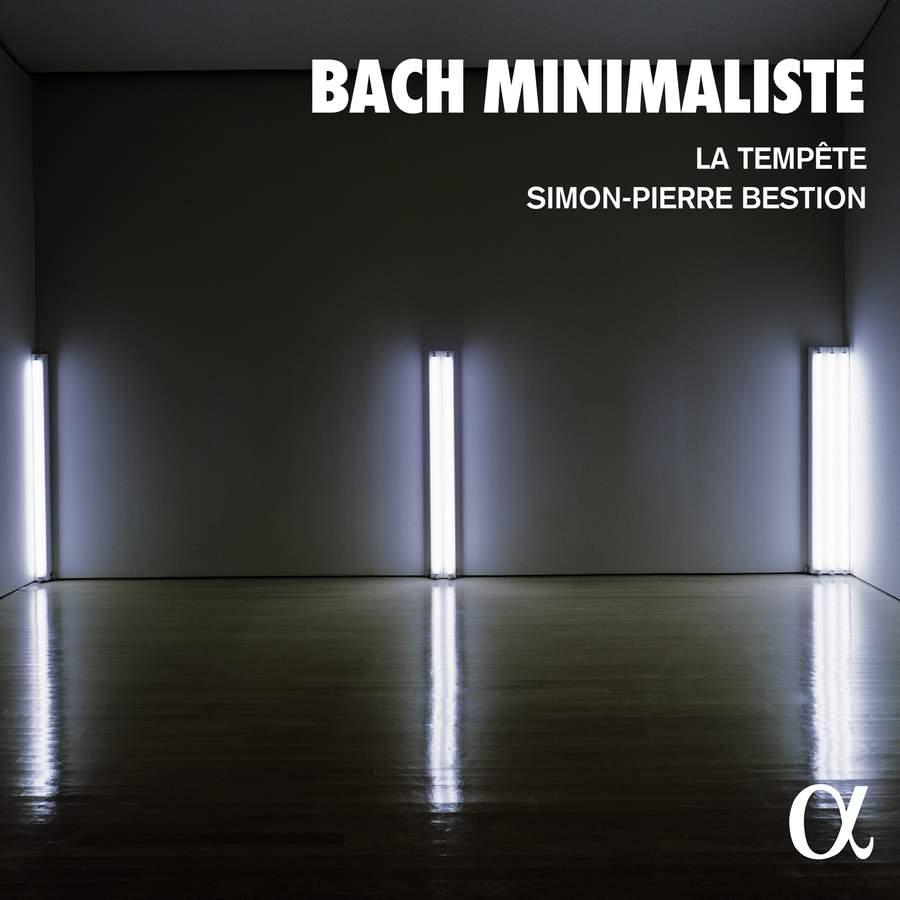
134 108 120 46
INSIDE THIS ISSUE…

-
Wayne Thiebaud
Reservoir




It has been said that the journey of a thousand miles begins with but a single step. I believe it was the Chinese philosopher Confucius who first uttered those words. Likewise, I believe that the journey of discovery begins with but a single step, a single decision towards a goal or lifelong desire in one’s life.
That single step began for me, with regard to AudioKeyReviews.com, with the review of the Meze Audio Rai Penta In-Ear-Monitor (IEM). The Rai Penta delivered what was my very first discovery of a truly highfidelity IEM and how remarkably good they could be. There would be others that were themselves singularly remarkable. I was and remain astonished.
My prior experience with IEMs was with the “came-with” versions that were really along for the ride, but not the high-fidelity enjoyment. The difference was marked, eye-opening, and a decided initial discovery, coming from decades-long adherence to two-channel stereo and nothing else. That experience led to a gathering of a few truly exceptional IEMs, Vision Ear’s EVE, Obravo’s EAMT-2C, and its RA-C-CU IEMs.
As a result of that experience and a good number of others, I have had numerous discoveries across well-known territory—two-channel audio,— streamers, a growing wealth of substantive tweaks, some rather fantastic wires and cables, which continue to deliver epiphany after epiphany, and incredible loudspeakers. What wonderful discoveries they have all been.
In this issue, you’ll find some rather outstanding products—an electrified isolation stand that provides stability down to 1.5Hz(!), a follow-up on a loudspeaker that has easily earned our most difficult award to obtain—the Breakthrough Award—an outstanding cable loom from which there will be no going back, and several others.
I do hope that you enjoy our September 2023 issue.
Sincerely,
K.E. Heartsong Editor-in-Chief


audiokeyreviewsCA.com
EDITOR’s CHAIR
THE CREW
Publisher/Editor-in-Chief

K. E. Heartsong
Managing Editor

Dr. Irina Kuzminsky
Senior Editor(s)
Andre Marc
Oliver Masciarotte Columnists
Dr. Irina Kuzminsky
Rain Jordan
Music Reviewers (Video/Written)
Dr. Irina Kuzminsky
Photographer
K. E. Heartsong
Graphic Design
Wabi Sabi Design Group
audiokeyreviews.com
MASTHEAD

 HermanMiller
HermanMiller
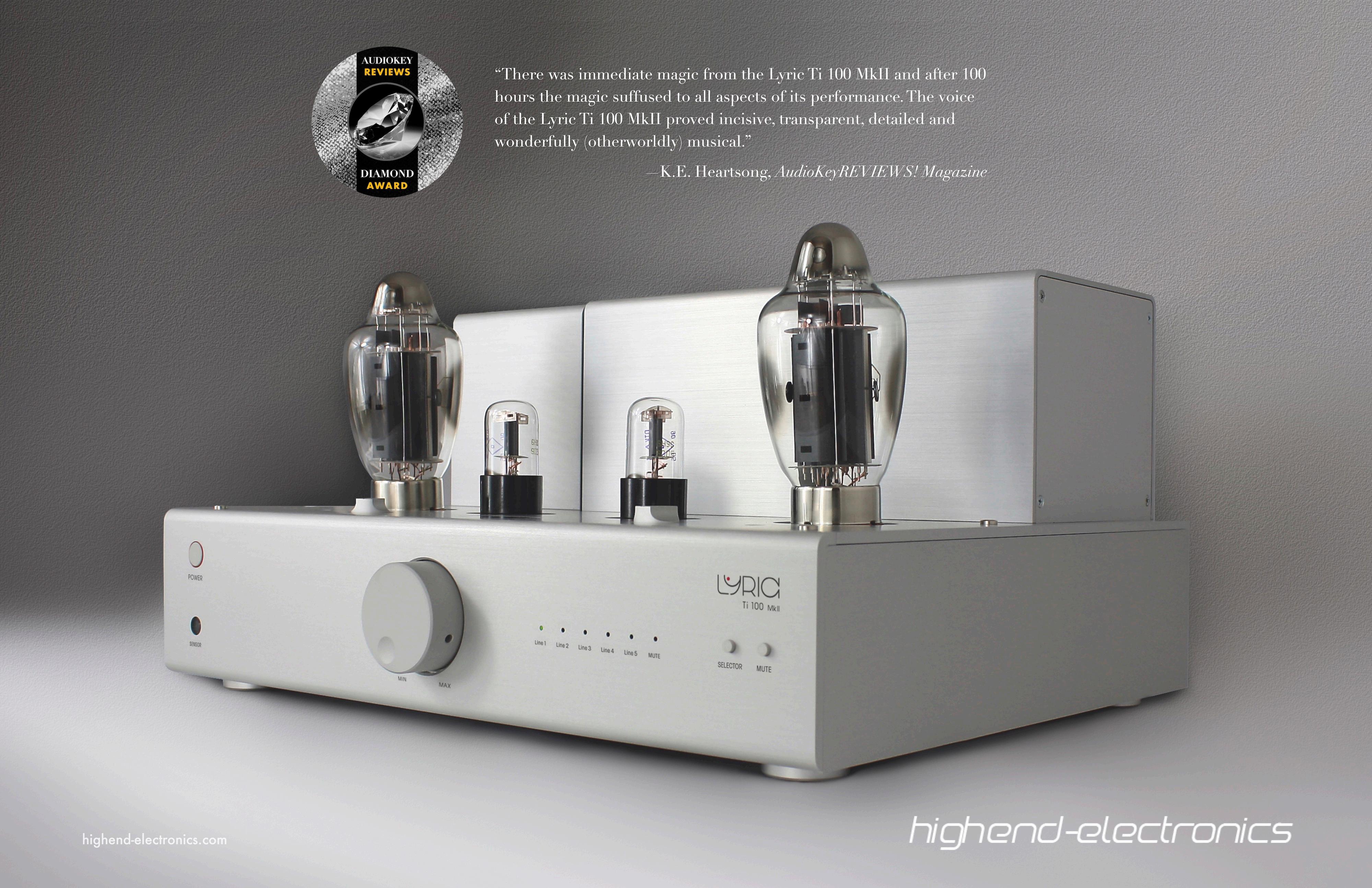


Claude Monet - Wheatstacks End of Summer





Paul Signac - Two Cypresses
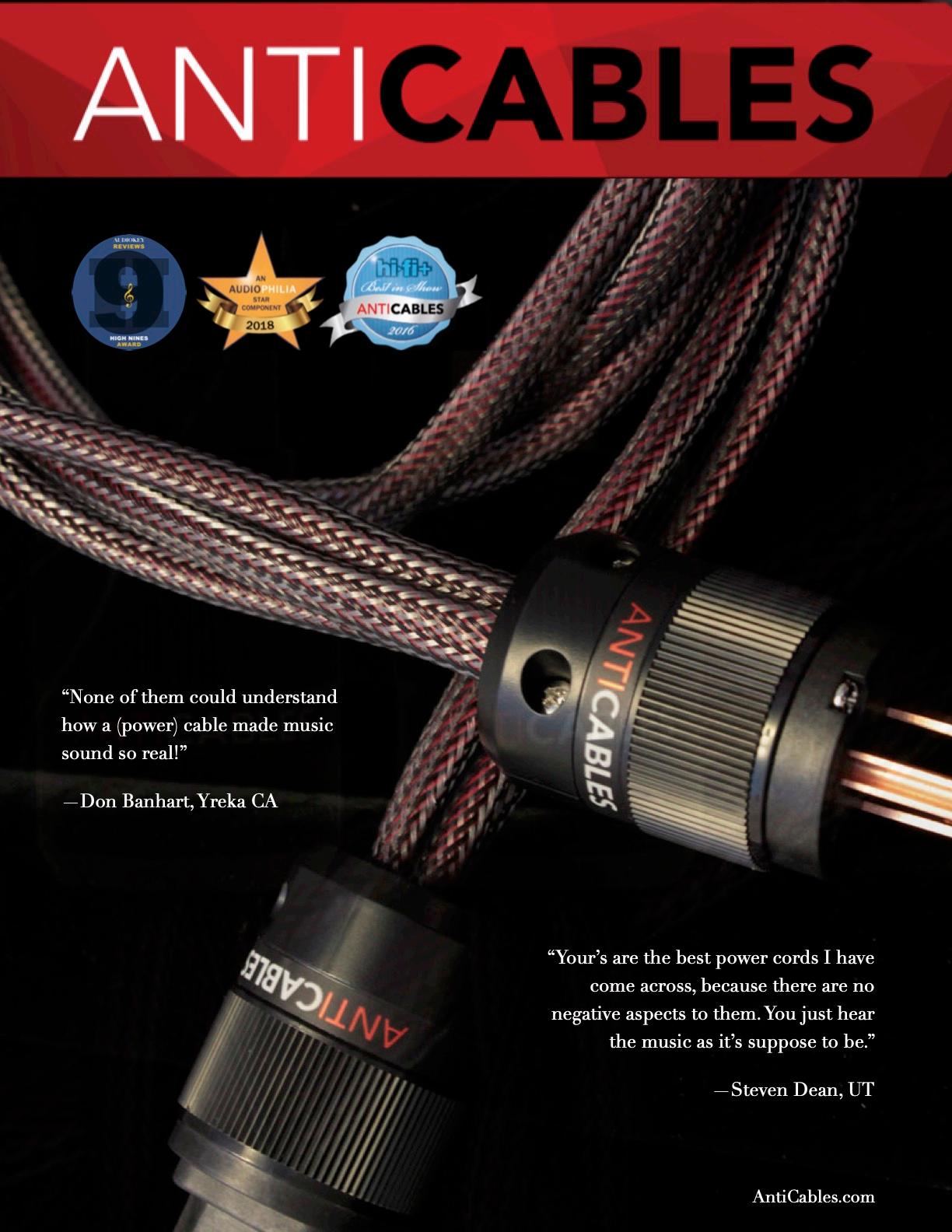 Wayne Thiebaud - Winding River
Wayne Thiebaud - Winding River
Preternatural ability to play all genres of music, including choral and live music, with exceptional technical prowess and outstanding musicality. A giant stalker and eliminator of the first order.
—K.E. Heartsong, AudioKeyReviews
They never failed to please, with any musical source at any reasonable listening level. (Perhaps they really are Shmoos!).
—Kalman Robinson, Stereophile
I found the VIVID Audio KAYA 45 speakers to be the most transparent and musical speakers I have reviewed in my more than 10 years of professional reviewing experience.

—Jim Clements, Home Theater High Fidelity
Contact us for your local dealer.


A PUBLIC SERVICE BY AUDIOKEYREVIEWS www.metmuseum.org
One of the Best Products of the Year and One of the Most Affordable!


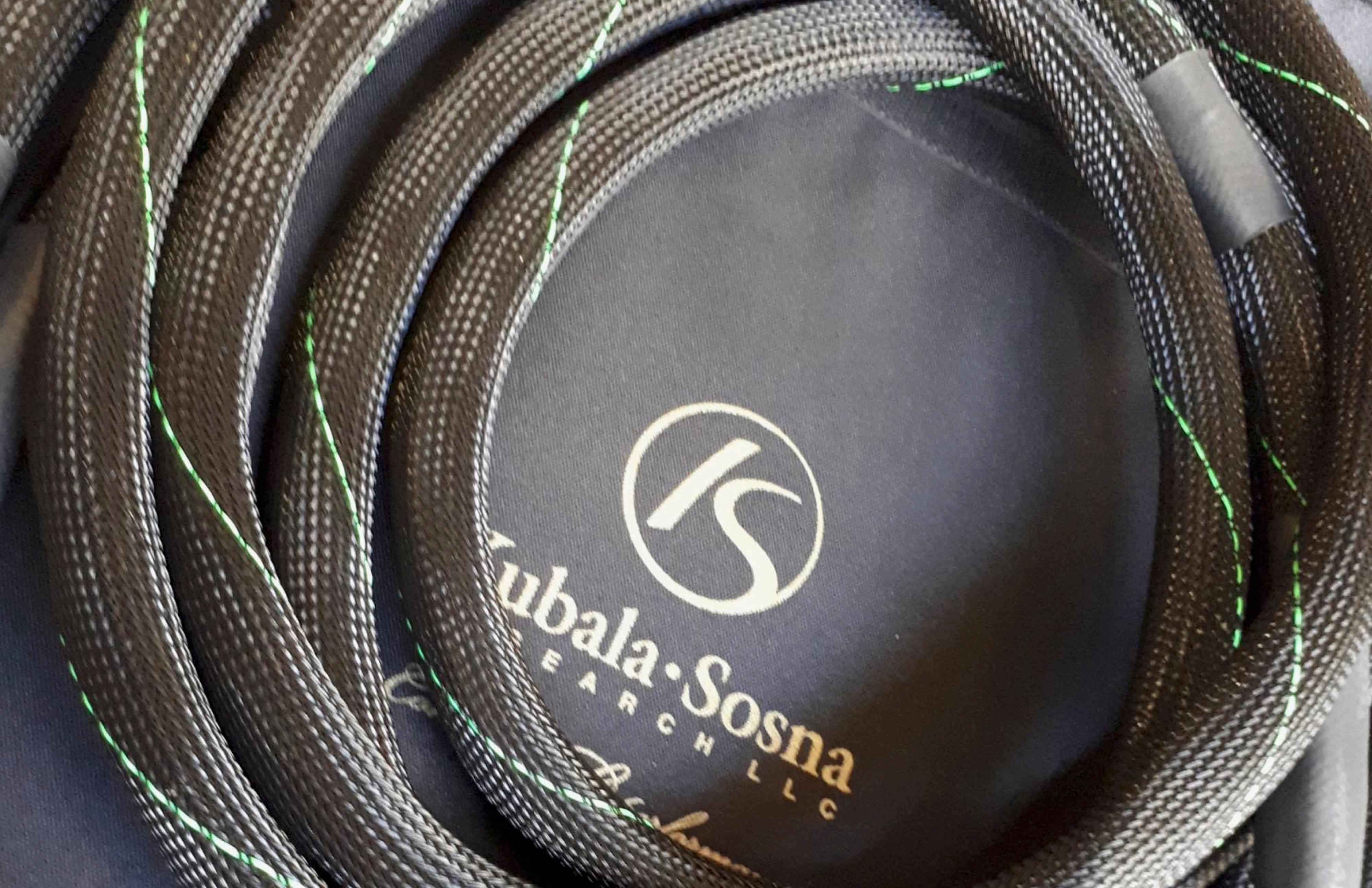 Courtesy Acoustic Gallery
Courtesy Acoustic Gallery
KUBALA SOSNA CABLE LOOM
 By K.E. Heartsong
By K.E. Heartsong
KUBALA SOSNA CABLE LOOM
It is a most interesting phenomenon when well-known and respected figures in the audio industry cry foul about any differences between cables and wires. And this regardless of the material composition of a given cable, the approach to a cable’s development—highly scientific and meticulous, in-garage development by ear, a combination of both, etc. It is a phenomenon that confounds me to this very day. As I often relate, there is a very wellknown amplifier manufacturer who makes no bones about the fact that cables are “snake oil” in his opinion. This, of course, flies in the face of the most basic demonstration that this is untrue. And a simple experiment is all it should take to understand the fallacy of that ideological belief.
Take your basic “comes-with-theequipment” interconnect cable. Now try a relatively inexpensive interconnect cable from, say, AntiCable or Audience or Art
Audio Cable. If your amplifier has two channels, the test will simply mean switching from one channel to the other to determine the difference between cables. While it did not take my background in engineering or materials science to be able to discern the differences between cables differing in material composition, the quality of materials used, and construction, it did give me a ready explanation as to the why.

Now try the “comes-withthe-equipment” interconnect cable with the interconnect cable currently under review— the Kubala Sosna Elation RCA

Interconnects. If, for some strange reason, you are unable to hear the difference between the stock cables and, God forbid, the Kubala Sosna cable, there is only one answer. You have long ago lost your hearing and are now only pretending to be a discerning listener. The current Kubala Sosna cable loom represented one of the most demonstrative differences between cables that I have experienced to date. This is, of course, my

audiokeyreviews.com
 Claude Monet - Poplars along the River Epte Autumn, 1891-2
Claude Monet - Poplars along the River Epte Autumn, 1891-2

did the Kubala Sosna cable loom represent and how transformative was the loom to both the reference two-channel system and the reference electrostatic headphone system?

REFRAIN: Unlike most reviews, this review will be non-sequential, as it will start with how the headphones actually sound and not the process of physically “undressing” them and/or laying out their various parts, specifications, etc. Think of this review then, as a non-linear movie—Memento, Kill Bill, Pulp Fiction, Transcendence, In the Shadow of the Moon, etc—that, likewise, starts at the end and winds its way to the beginning.
THE SETUP
The Kubala Sosna review would first be placed in the reference two-channel system as
coupled with the Lyric Audio Ti 100 SET Integrated (20 Watts). The Vivid Audio Kaya 45 took speaker honours over the entire course of the review.
I had received a loom from the various families of Kubala Sosna cables—Elation, Emotion, Sensation—which helped to maximize implementation relative to the system and the most cost-efficient pricing structure. The loom was composed of:
• Elation Speaker Cables (2.5m)

• Elation XLR Interconnects (1-1.5m, 1-2.5m)
• Emotion Digital Single-Ended Interconnect (1-2.0m)

• Emotion Digital AES/EBU Interconnects (1-1.5m)
• Sensation Power Cords (4-2.0m)
audiokeyreviews.com
power) Front Row power cords, though good, were not quite the match of the other Front Row cables. In this instance, opting for the more robust HP (high power) version found everything in good order. Lastly, there were a number of other speaker cables and power cables utilized in the reference system, and the Kubala Sosna cable loom would replace them all.

I kept things simple in terms of the streams that would be used for evaluation. I used Dave Brubeck’s “Take Five” (Time Out, Columbia), Voces8’s LUX (Decca Music Group), Ólafur Arnalds’ “Árbakkinn,” (Island Songs, ECM), Eiji Oue’s Stravinsky
THE SYSTEM
• Grimm Audio MU1 Streamer


• Bricasti Design M1 Special Edition DAC
• Mola Mola Tambaqui DAC
• Silent Angel Bonn NX Network Switch
• Silent Angel Genesis GX Clock
• Audionet PRE G2 Preamplifier
• Audionet AMP Monoblock Amplifiers
• LYRIC Ti 100 Single-Ended Integrated
• Vivid Audio Kaya 45 Speakers
• Audience FrontRow Interconnects (XLR, RCA), USB, Ethernet
• RSX BEYOND, MAX Power-cords

• AntiCable Level 3 Power-cords
• TORUS AUDIO AVR ELITE power conditioner
audiokeyreviews.com

 The-Old-Mill-1888-by-Vincent-Van-Gogh
Vincent Van Gogh - The Old Mill,1888
The-Old-Mill-1888-by-Vincent-Van-Gogh
Vincent Van Gogh - The Old Mill,1888
KUBALA SOSNA CABLE LOOM
THE SOUND
The Kubala Sosna speaker cables were the first cables from the loom placed in the system to understand its way with the music. The following analogy, I believe, best explains the outcome and how the Elation speaker cables presented themselves.

Imagine, if you will, a kitchen faucet. Now the water that comes through that faucet is clean, clear, and, given that its source is mountain water, pure as well. When the previous cable(s) were removed and replaced with the Kubala Sosna Elation speaker cables, it was as if these various speaker cables had merely been dripping or trickling out the water (music). The Elation speaker cables, on the other hand, made the water (music) flow generously and effortlessly. The Elation cables were themselves transparent, clear, open, and very resolving, if not more so, while the flow of water (music) from them was astonishing.
I recall the first several seconds, when the music rushed forth from the speakers via the Elation speaker cables as my mouth fell agape. “How can this be?” I thought. I had
never experienced such a profound broadening of all aspects of the music from any other speaker cable that I had switched out for comparison. There might be more bass or less, a better handling of the music’s tone/timbre or overall harmonic structure or less, or more clarity, resolution, or detail or less, but it had always been more than a bit subtle to most apparent. The changeout with the Kubala Sosna Elation speaker cable was profound. The listening room was now filled with the performance, the harmonics, the tone, timbre as if released from captivity, and to full effect. The frequency range and the dynamic range were no longer limited, the Elation speaker cables saw to that, as they laid out the facts of each recording beautifully. The previous cables, despite their noted bona fides and their awards, given by us(!), seemed, well, flat in comparison and uninspiring.
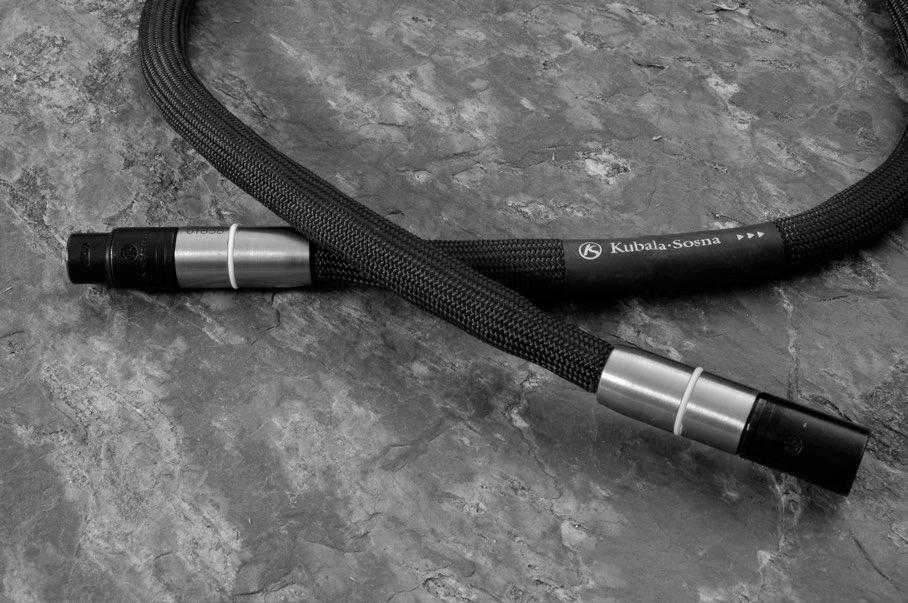
This necessitated an immediate top-tobottom full switchover to the Kubala Sosna cable loom. The results were in every respect, across every connection, the selfsame realization—that the dripping, trickling, leaky musical faucet was no more and a strong flow

audiokeyreviews.com
of music had replaced it, in every respect. I don’t know if you have ever had this happen to you, but across my long years as a music lover and audiophile, in terms of cable switch-outs, this was a first for the enormity of difference.
The Kubala Sosna cable loom from digital to analog interconnects brought a fullness of harmonics, texture, tone, and timbre and a resultant “palpability” that was, to this degree, missing via the previous cables. And the discovery of recorded information previously unheard, along with clarity and resolution, no longer had me guessing for lyrics in complex passages. This was worth more than a few shakes of the head.
I rolled out my records to chart and discern these revelations and narrow in on the changes. With Ólafur Arnalds’

“Árbakkinn” (Island Songs, ECM), the transparency of the Kubala Sosna loom revealed the birds in the background, outside the building, chiming in earlier and more clearly to assist poet Einar Georg Einarsson, whose voice was more natural, clear, textured. Further, there was the “air” of the venue (and in every venue really), that in comparison to the other cables was only barely ever there.
Elina Duni’s Partir (ECM) was sublime, poignant, with Elina in-room more clearly than ever before, and her voice superbly natural, immensely engaging. Vangelis’ Blade Runner Soundtrack (East West UK) was
more ethereal and had suffused the entirety of the listening room, with the various effects more pronounced and their tones/timbres clearly differentiating themselves. And as track after track cued in and then out, it was always the same—more and beautifully so.
When playing one of my favourite genres —choral—and one of my favourite groups— Voces8—the air and ambiance, the fine detail of the meticulous layered soundstage(s), the commensurate depth of said stage(s), the unwavering consistency of images on stage, the refinement and nuance (across every track played), and their incredibly natural way with the music was extraordinary! Extraordinary!
After the review, a thought came to me, “So this is what happens at the pinnacle of the cable/wire genre.” Indeed. Overall, it is quite easy for me to say that there was more “there, there” with the Kubala Sosna cable loom and in every respect, than any other cable heard to date.
THE SPECIFICATIONS
See Kubala Sosna Cable Information
CONCLUSION
I was not ready for the stunning difference that the Kubala Sosna Elation speaker cables made once placed in the system. Night and day, or perhaps appreciation versus bliss, would provide some insight as to the relative differences between the cables. The

audiokeyreviews.com
KUBALA SOSNA CABLE LOOM
experience was decidedly profound and another easy confirmation that there are differences between cables.
As the balance of the Kubala Sosna cables made their way into the two-channel reference system, it became more and more apparent that there would be no going back, the speaker cables had made that overwhelmingly clear. And each new cable implementation easily solidified that initial revelation.
The Kubala Sosna cables had first done no harm, caused not a single ill-effect, while liberating the music via the ready flow of music to what had been in retrospect the drip-drip trickle of music. From the Elation line to the Emotion line to the Sensation line, the cables were outstanding and they individually and collectively lifted the various reference systems—two-channel, electrostatic headphones—to easily their best performances ever. This will become immediately clear to you once you, the reader, have tried this selfsame experiment.
That being said, I very highly recommend the Kubala Sosna cable loom in its acrossthe-line models as easy Diamond Award winners. And with end-of-the-year awards looming just around the corner, you will see them again.

Pros: Exceptional in their ability to simply let the music flow while doing no harm whatsoever and while further making the conclusive argument that cables are incredibly important to achieving ever greater levels of high fidelity in your system. Period.
Cons: None. Clark’s headphones you will need sufficient top-shelf power to drive them well.
THE COMPANY
KUBALA SOSNA
• Elation Speaker Cables (2.5m): $9,250

• Elation XLR Interconnects (1-1.5m, 1-2.5m): $7,750; $8,500
• Emotion Digital Single-Ended Interconnect (1-2.0m): $1,800

• Emotion Digital AES/EBU Interconnects (1-1.5m): $2,000
• Sensation Power Cords (4-2.0m): $2,050/per
11 Melanie Lane, Unit 24A
East Hanover, NJ 07936
Tel.: (973) 993-1952
Fax: (973) 538-5615
AKRM


HermanMiller

MUSICAL MUSINGS
 By Irina Kuzminsky
By Irina Kuzminsky
Every extreme inevitably breeds its opposite. In a world of increasingly overwhelming complexity minimalism is looming large on the other end of the spectrum. Minimalist music for meditation, for innerness, for immersion. for reaching out to simplicity from out of the midst of all the complexity. So a title like Bach minimaliste is immediately appealing. However, don’t be fooled by the title. What the ensemble orchestra La Tempête under the direction of Simon-Pierre Bestion is trying to achieve is a demonstration of the continuity between J.S. Bach and the minimalist contemporary composers of the late twentieth century with their return to simpler harmonies, repeating loops and patterns, use of drones, and pulsating steady rhythms, while eschewing the harmonic and rhythmic complexities of earlier
twentieth century serialist composers. Techno music and electronic house are analogous examples in a different genre. Philip Glass is probably the most famous and influential of this minimalist group with his hypnotically repeating ostinato patterns and simple harmonies. Others include Terry Riley, Steve Reich, John Adams and Arvo Pärt to name a few. Featured on this album, alongside Bach, are Henryk Mikolaj Górecki (1933-2010), Knut Nystedt (1915-2014), John Adams (1947), and Jehan Alain (1911-1940). Bach minimaliste is also actually an ongoing audio visual collaboration begun in 2019 in which stage design and video mapping are supposed to enhance the patterns and repetitions in the music.
The patterning of the album itself is an interesting one. Works loop in and out, and the structure of the whole is distinctly non-

audiokeyreviews.com

Leonardo
da Vinci -Womens Head, c.1473



A PUBLIC SERVICE BY AUDIOKEYREVIEWS www.artic.edu
MUSICAL MUSINGS
linear. The first movement of Bach’s Harpsichord Concerto No.1 in D minor is followed by the first movement of Górecki’s Concerto for Harpsichord and String Orchestra (also in D minor), followed by Knut Nystedt’s Immortal Bach op.153b (based on the first line of Bach’s sacred song “Komm, süßer Tod”), followed by the first movement of John Adams’ Shaker Loops. Movements from these works all reappear later in the album, looping in and out of the track list. The only works to not recur are Jehan Alain’s Litanies , Bach’s Passacaglia in C minor and the concluding chorale prelude fragment, “Vor Deinen Thron tret ich”. A way of emphasizing the similarities and continuities between the works I guess, along with the whole idea of loops and patterns.
The opening movement of Bach’s Harpsichord Concerto brims with energy and Bach’s particular type of complexity, harmonic and structural. The driving force of the ensemble’s playing is palpable here, as is that of harpsichordist Louis-Noël
Bestion de Camboulas who is technically and musically assured throughout the album, whether playing the leading soloist role, providing a rhythmic ostinato accompaniment or erupting into cadenzalike displays. As always in Bach, dissonances get resolved rapidly into harmonies and maybe that was the crucial difference
between then and now: the belief that dissonances in music (or in our lives) would not be left hanging but would always find a resolution into harmony.

There is a well nigh seamless transition into the first movement of Górecki’s Concerto for Harpsichord and String Orchestra – these transitions are themselves a feature of the album, again in an effort to show the continuity in tradition from the High Baroque to contemporary minimalism. I even had to stop and check whether Bach might not have wandered into unfamiliar territory! But no. Here the harpsichord plays more the role of an ostinato rhythmic accompaniment with the strings providing a legato foregrounded melodic line imbued with a sense of menace and tragedy missing in Bach. The dissonances between harpsichord and the strings’ motif grow more palpable, more troubling, to be ultimately resolved by a very long very drawn out chord held into a pianissimo. Who says instrumental music cannot ‘speak’?
Norwegian composer Knut Nystedt derived his Immortal Bach for an a cappella mixed choir from the first line of Bach’s “Komm, süßer Tod”. Slow moving and profound, Nystedt transforms Bach’s song for one singer and basso continuo into an arrangement in which the singers, while starting and ending any phrase together, perform it at varying tempi. The result, even
audiokeyreviews.com
MUSICAL MUSINGS

in these extracts bookended by other works, is nothing short of mesmerizing with a quality of timelessness.
Shaker Loops by John Adams furnishes the next contrast – we get to hear all four movements, starting with “Shaking and Trembling”, but we have to wait till after Alain’s Litanies for “Hymning Slews”, and more Bach, Nystedt and Górecki before we get to III (“Loops and Verses”) and IV (“A Final Shaking”). These, somewhat unusually for the album, follow on from each other, presumably being impossible to prise apart. Volume and intensity are again elevated in “Shaking and Trembling”, while the following Litanies by Alain are an altogether lighter affair, even jazzy at the start with filmic elements. This leads us into Adams’ “Hymning Slews” with its sense of quietude, the music aiming for a kind of quiet ecstasy. An arrangement for harpsichord and strings of Bach’s Passacaglia follows, showing once again just how well Bach’s music adapts to different mediums. This arrangement brings out the lines and texture of the original with great clarity and accentuates the timeless nature of Bach’s music. The transition into the reprise of the muted tones of Nystedt’s Immortal Bach is seamless. The wall of vocal sound achieved here reminded me of Eastern Orthodox chant and is a highlight of the album.
The third movement of Bach’s Harpsichord Concerto comes as a huge contrast. It is classic Bach, brimming with driving energy and joie de vivre – a joyous listening experience with some brilliant work on the harpsichord. The transition into the second movement of the Górecki Concerto for Harpsichord did not work as well to my ears as the first transition, the Górecki sounding like an aural assault after the joyous positivity of Bach. The driving energy is present in both, but here it is mechanical, compulsively relentless, not to mention dissonant.
Adams’ final two movements from Shaker Loops seem to remind us of the compulsions of faith and of relentlessly building movement.
An arrangement for strings of Bach’s chorale prelude fragment “Vor Deinen Thron tret ich” follows, taking a little time to settle the listener into the music’s harmonious beauty and resolution of human concerns. And aptly bringing the album to its conclusion.
Bach somehow manages to combine and transcend both complexity and simplicity. Incorporate dissonances and resolve them in passing. Make use of patterns yet not sound repetitive. More Bach please! But all in all, an intriguing concept and an intriguing and rewarding album.
audiokeyreviews.com
AKRM
 Paul Gauguin
Paul Gauguin



 Wassily-Kandinsky - Ruggism
Wassily-Kandinsky - Ruggism



JOAN OF AUDIO & MUSIC

 By Rain Jordan
By Rain Jordan
A HIGHER LOVE AMANDA

My mission is to bridge the gap between spirit and body with music and love.
—Amanda Beltz
My mission is to bridge the gap between spirit and body with music and love.
~ Amanda Beltz
My interview with Amanda Beltz, talented songwriter and vocal artist from Sacramento, CA, is the finale to my four-part series entitled, “A Higher Love”. My aim in this series has been to uplift emergent artists or creatives (mostly local) who have a high calling to create, yet are not in the
mainstream spotlight, but are immensely dedicated, talented, and worthy of being seen and heard. As I interviewed Amanda, and listened to her songs, I became acutely aware of her unique vibration or her vibrational DNA, so to speak, and how it serves the world at this time. I’m sure, for many of us, it’s become increasingly evident that we are living in extremely precarious times. Yet, I can’t help but see the rising tide of people everywhere stepping deeply into their creativity and self-discovery. This rising tide is a real and effectual counter response to
Painting by Rossetti
 Henri Matisse - Blue Nude
Henri Matisse - Blue Nude

JOAN OF AUDIO & MUSIC

what seems to be an accelerating global government that continues to give larger corporations more and more power over society. And as corporations reel in record profits from humanity’s labor or more accurately our energy and creativity, “we the people” become more and more disempowered to live authentic lives that truly serve our purpose and the world at large. Thus, the antidote to this tyranny is to awaken to who we are truly created to be, and to create from this truth. So, what does this have to do with Amanda Beltz? Let the music play! Amanda is an emergent artist who transmutes this tyranny in her own gentle but powerfully creative way. Her voice is a portal to the heart, a way to remember the sweet innocence and ease of our innate nature as spiritual beings having a human experience. Her songs are stunningly simple, beautiful, and intuitive. Her artistry is a mirror of the divine inherent in all of us, especially the divine feminine.
Her song, Ride Sunshine, an original by Amanda, soon to be released as part of her EP Sway, is a smooth and paradisiacal ride into the splendor and unity of love and the natural world. And her newest single, Sway, written for her husband, offers us an alluring invitation to reconnect with the simple sway and beauty of the ocean as she melodically serenades the man she loves. Amanda also sings stunning covers and collaborates with musicians and producers across genres.
As you read her interview, I think you will find parallels and influences in Amanda’s life that are seamlessly present in her music. The connection, depth, power, and beauty she brings to her songs is purpose driven and has been hard-won, such is the power of transmuting darkness to light.
You can find Amanda’s music on Instagram, YouTube, and all digital music platforms. Enjoy her interview!

AKRM
audiokeyreviews.com
“Solid state dynamics, resolution, detail retrieval, and spaciousness married to tube liquidity, remarkable tone/timbre/texture, offer #%$*@! musical bliss. What more could one ask for (Aurorasound HEADA)?”

—K.E. Heartsong, AudioKeyREVIEWS! Magazine





highend-electronics.com



Conducted by Raine Jordan INTERVIEW Amanda Beltz

INTERVIEW: AMANDA BELTZ
Ifirst heard Amanda Beltz sing live at band practice for The Annual Music Medicine Benefit Concert. Amanda was hired to perform two solo songs and sing backup vocals. When I met her, I immediately noticed how humble and softspoken she was. She had an inner quietness that was palpable. When Amanda’s turn came to sing, she stepped forward with that very same inner quietness and calm. When she sings all else recedes into the background. Her voice stands alone as the main event.
RAINE JORDAN (RJ) How would you describe yourself as an artist?
AMANDA BELTZ (AB) I am a spiritual creative who is ever evolving. All of us as humans are evolving through our life experiences and perceptions. I believe we should allow for creativity to flow as freely as


possible because art/music is limitless and timeless.
(RJ) What is your primary intention or purpose as an artist? And can you name what it is that you are expressing or giving to your audience through your songs?
(AB) My primary intention and purpose is to bring love and awareness to my audience. I believe in singing a message to awaken feelings and spiritual awareness. Words are so powerful, and they allow the audience to feel. I love to create the experience to feel, to tap into the unconscious. When I look into my audience’s eyes, I see myself. All the expansive reflections that are each a part of yourself coming together in one space. The audience, the musicians all aligning in a moment in time to feel the vibration of sound.
(RJ) Tell me about your journey and how you discovered your talent as a vocalist/artist?
(AB) Since I can remember, I used music as therapy to get through some soul expanding challenges. My mother struggled with mental
audiokeyreviews.com

Claude Monet - Water Lillies

INTERVIEW: AMANDA BELTZ


illness throughout my childhood that exposed me to some very scary circumstances, and I didn't know my father. The men that did come into my life were abusive and I lived in fear many days. I took on a motherly role at a young age to my younger brother and told myself I needed to be strong for the both of us. I was bullied through elementary school and felt very alone. The pen, the paper and my voice were there to bring through the pain that was held inside. I didn't realize until others started to say something that I had talent. I remember sitting in the back of my aunt’s van at the age of 7 singing to the radio. She turned the stereo down and said who was that? I said, “me,” softly. Her response was “that sounds good Amanda.” I sang because it felt good, and I sang because it allowed me to feel connected to my divine guidance. As I sang in front of others more, it became a way of connecting with them. I then realized God gave me a gift and a
mission. My mission is to bridge the gap between spirit and body with music and love. To remind others they are not alone and to have hope. We are a soul, energy, not just this body. Mental illness is not just mental it is very much spiritual. Music is a way to tune in and transmute negative energies.
(RJ) Who were your influences and what helped to shape your vocal style and talent?
(AB) I was blessed to be raised by my grandparents in the beginning of my childhood after being taken from my mother at the age of 2. It played a big role in a more solid foundation and my grandmother gave me the love I needed.
My beautiful grandmother gave me a song book that would play Christian hymns. Some of them were “This Little Light of mine”, “Jesus Wants Me for a Sunbeam”, and “Jesus Loves Me”, to name a few. The songs brought me comfort when I felt confusion, and they grounded me. My grandparents expanded my musical library to Etta James, James Brown, Aretha Franklin and so much
INTERVIEW: AMANDA BELTZ

more! I would roll around my grandfather’s garage on his stool as he worked on cars and blasted his music. I would listen and try to mimic all of the sounds with my voice. When I left my grandparents and I moved back in with my mother and new stepfather, I was shaped by so many more styles. They listened to a lot of 80s Rock. I also loved Celine Dion, Christina Aguilera as well as Shania Twain. I found strength in these women that I didn't see in my life. I was in awe of Whitney Houston and Mariah Carey’s vocal abilities. Some of their songs got me through hard times and inspired me to try new runs vocally. In particular, the song, “Respect” by Aretha Franklin really hit home for me. Most of the men that came into my life didn't have the respect for women that I felt they should. This song reminded me of my worth when I was young and still today. Everyone deserves respect and love.
(RJ) What is your creative process like? Do you write your own songs, or do you sing mostly covers?
(AB) I love to sit with my pen and paper in a quiet place. I love to write my own songs I find it to be more of a spiritual experience almost like I am downloading messages. All my feelings can come up to be processed. Covering songs is also very therapeutic when I feel the connection. I used to sing this song called “One Voice,” by a young country singer by the name of Billy Gilman. As a child this song helped me to realize I was not alone in the feelings I was experiencing. A part of my creative process I can look like I’m playing in Garage Band. It is an awesome resource for making a beat and a rough draft. I enjoy layering the many sounds and creating music. Experimenting with loop pedals and new instruments is a continual joy. Sometimes I will throw on a free beat on YouTube and it will inspire my writing, other

audiokeyreviews.com
times I will collaborate with other musicians, and we will create something I could not have on my own. In other moments, a melody can seemingly come into my ear, and I have to run to find a pen or push the record button on my phone, so I don't forget the lyrical blessing coming through.

(RJ) What challenges do you currently face as an artist?
(AB) Learning to balance and I laugh because I think life is a constant changing and fluctuating energy that you have to learn to flow with.
As a mother of 4 beautiful children, I find myself having to be super intentional about my space to create, and as a woman having to get out of my own way to do so. It is easy by default to put the needs of everyone around you in front of yourself. Being of service to others is a wonderful thing but I have to remember that what fills up my cup will serve many.
(RJ) How important is building a real relationship with the songs you’re singing and the musicians you’re playing with?
(AB) Relationships are everything! We see ourselves in everyone whether we aware of it or not. Working with others, getting to connect and create together expands the messages in the songs. The musicians I am blessed to work with are each bringing their unique ear and talent to the song. I love that music brings people together and connects them all in the moment. The moment of now!
(RJ) What kinds of things, i.e., current events, personal experiences, etc. are inspiring your work at the moment?
(AB) Truthfully, love is always inspiring my work. I know that what I focus on will be created in this reality and I strive to focus on love. My family and our experiences together

INTERVIEW: AMANDA BELTZ
inspire me daily. Our children get to show my husband and I how to love more. We recently downsized our home significantly and I am so grateful for it. Letting go of all the things we don't really need has been such a blessing. Letting go of physical things to let in more experiences. My goal is to live more intentionally every day and show compassion for others while giving grace for my own shortcomings. These are some of my personal experiences that influence my work.
(RJ) What do you learn or how do you grow/ evolve as a person through your music?
(AB) I learn what is in my heart and I grow with the experiences I am blessed with. Sometimes I don't realize it is a blessing in the moment but when I look back and reflect, I see the beautiful tapestry of my life that is in my becoming. Hard things don't have to break you, they make you.
(RJ) What are you currently working on and with whom?
(AB) I am currently working on releasing my songs, Ride Sunshine and Gold Heart. I have been working with the amazing “Juan Ugly Fingers Blair”, a musician and producer in Sonoma Ca. These two songs are a part of the Sway EP and are my first songs to be released independently. Sway being the first was a collaboration with my friend Pat Mays, a wonderful guitar player in Sacramento. I have recently been playing with a fantastically
talented band in Sacramento called Analog Jazz. We do covers from the 50's through now, with a Jazzy twist. As well as play my original music.
(RJ) What do you envision for your future as an artist and what impact do you hope to have?
(AB) I envision inspiring others to do what they love, and I hope the love I share brings feelings of warmth and inspiration to their souls. I envision bringing people together from all walks of life to connect and remember who they are. A soul having an experience.

(RJ) In closing, is there anything you’d like to convey to our readers or audience that you feel is important or relevant to you or to other emergent artists?
(AB) Remember that you hold the power. No one else can tell you what you can do but you. Take the first step in doing what you love, we didn't come out of the womb walking. I will close with one of my very favorite quotes from the beautiful Maya Angelou, “I’ve learned that people will forget what you said, people will forget what you did, but people will never forget how you made them feel.”
AKRM
 Pierre Auguste Renoir - On the Terrace, 1881
Pierre Auguste Renoir - On the Terrace, 1881



Wayne Thiebaud - False Flowers



BOENICKE W8


 By Oliver Masciarotte
By Oliver Masciarotte

BOENICKE W8
Ltend to broadcast their designer’s intent through unconcealed physicality. Take, for example, the absurdly overbearing designs of larger Wilson speakers or the hollow state wet dream that is AtmaSphere’s MA-3. Recently, I was presented with a delightful conundrum that exploded both my expectation bias and my concept of what the platonic ideal of “small speaker” can achieve. The topic of this month’s review is a floor stander. Not just any floor stander, but one that, with its diminutive proportions and heretical tech, manages to outperform far larger models from other more hidebound companies.
Sven Boenicke is a relatively young man, a citizen of that iconic land of cows, chocolate, the Red Cross, and precision machinery. That would be the Swiss Confederation, aka Switzerland, where Boenicke Audio manufactures five solid wood models of speaker. He also directs an audiophile record
label, B:THERE RECORDS, which employs a cost-no-object signal chain. A handful of custom microphones feed DC-
Consulting preamplifiers, which are, as Boenicke opines, “…considered (to be) one of the most transparent and the fastest on the planet, using a minimum amount of parts, and those parts are simply the
ultraclean signal feeds a custom solid state Windows–based DAW (recorder) at 88.2kHz
The aside about “…simply the fanciest available” is telling. This is Boenicke’s approach to

uncompromising devotion to fidelity, no matter what it takes. His phase plugs are wood, his
internals labyrinthine, and his
brilliant, effective, and elegantly simple in design and execution. The speaker’s driver complement consists of a side-mounted 6.5" long throw bass driver, tuned to 28Hz and running wideband without a crossover, a 4" custom paper cone bass-midrange via a first-

audiokeyreviews.com
 Wayne Thiebaud - Ripley Ridge
Wayne Thiebaud - Ripley Ridge

BOENICKE W8
order low pass filter (no high pass) with an apple wood phase plug and a maple wood cone mounted to the magnet, and a 3" “wide bander” fed from a firstorder high pass filter. The 3” and 4"drivers have their own enclosed space in the cabinet. A 1" soft dome tweeter wedded to a shallow flare waveguide sits on the back to enhance envelopment. Internal wiring is “orientation–optimized,” silk-wrapped stranded litz with quality WBT NextGen binding posts.
Boenicke Audio manufactures six models, from a very compact centre channel to the low but wide top-of-the-line W22. The W8 is the third-smallest and is available in solid wood species, from about $8,950 for ash or oak and a bit more for black oil finish, plus $9,100 for cherry and $9,470 for walnut. The loudspeakers arrived in one all-paper doublewalled carton with each speaker in its own cloth bag. At 30 pounds per piece, it was fairly easy to pull them out of the box and get

them set up all by myself, being careful not to touch that rear-firing fabric tweet. It was nice to see almost no synthetics in the packaging, a refreshing change from landfills full of oft broken expanded styrene and seemingly endless amounts of shrink wrap and plastic packing tape. After messing around with room placement, I ended up going with Sven’s suggestion of heavy toe-in so “… they cross slightly in front of you” and “… with as much air behind the speakers as possible.” Not quite a “giant headphones” placement, but much closer to my listening normal for most speakers. An aspect of
listening space is their uneven frequency response in the vertical dimension when you are very close. Either you should situate the speakers well away from you or, if they are close by, you may need a low seat height. The

audiokeyreviews.com
BOENICKE W8
speakers sounded best to me when my ears were approximately in line with the upper driver, some 26 or 27 inches from the floor. Remember the Memorex ad? My momma taught me not to slouch, so low-slung seating is key.
Connections consisted of ANTICABLES Level 3.1 to the speaker’s single set of luxe binding posts. For amplification, I used my Parasound JC 3 solid state stereo amp to avoid any colouration. Same goes for the sources; the Tubadour IV SE DAC from Audio Mirror and Mytek’s Liberty II DAC directly into the JC 3. With the W8, it was easy to hear the sonic signatures of each converter.
I started my listening with the gone but not forgotten John Winston Lennon, who would have been a crusty 83 this October. Qobuz reminded me of Lennon with a newly streaming version of Double Fantasy, which is, for me, a very challenging album. So instead I went back to 1971’s
Imagine [96k Apple Corps, remastered 2010], an album I dearly love. With Klaus Voormann on bass, Jim Keltner on drums, Nicky Hopkins tickling the ivories, and Phil Spector plus Yoko overseeing the proceedings along with a host of famous musician friends, what’s not to like? The svelte W8s supplied the most precise yet expansive imaging and soundstage I have yet to experience in my living/listening room. Could it be a combination of their ultra-slim baffle, their rear-facing tweeter, and all around clever engineering? I think so. The W8 is physically time-aligned by its baffle that’s angled away from
discourse on the speaker’s stands is in order. There are two options, with both sharing a novel front footer. Toward the front of the cabinet, a shallowly dimpled bronze plate, about 2" in diameter, is inset into the butcher block-style laminated wood enclosure. Each

corresponding free standing plate and a small steel ball bearing. If you place the free plate

audiokeyreviews.com

BOENICKE W8

on the floor and rest the ball bearing in the dimple, you can then slide that combination under the front of the speaker so the bearing lines up with the dimple in the recessed upper plate. Voilà! A single weight-bearing point of suspension in front. In back, you have the choice of two “outriggers.” The standard one is a basic arrangement where two height-adjustable felt-clad feet are mounted on a crossbar with perpendicularly-attached plate. The plate slides into a slot cut into the bottom back of the speaker. This results in a slightly atypical rigid three-point support.
As a $1,640 option, you can purchase the eccentric and exceptional SwingBase, whereby the aforementioned plate, instead of being connected to a horizontal bar, is suspended by short and thin metal cables, which in turn hang from outboard footers. Along with the front ball bearing, this produces a devilishly simple three-point suspended support mechanism. Levelling is
 outriggers and dimpled
Wearing his soundtrack
outriggers and dimpled
Wearing his soundtrack
audiokeyreviews.com
National Bordeaux Aquitaine conducted
by Romain

Dumas. The entrée into the album, appropriately named Premiers Mouvements, rests on a “strings of tension” bed, with fatter strings, horns, and percussive elements slowly building, then diminishing, a repetitive ebb and flow of the simple leitmotif that reappears in track 13. Busy strings, double reeds, double bass, and supporting cast were all painted by the W8 with a light, nimble, and convincing brush. Track 13, Le Minotaure, employs all the weighty denizens of the orchestra. Despite their size, the speakers reached down into the middle 30s in my room when playing warble tones, which is no small feat—pun intended. Yes, they are not the last word in slam or LF ease like an open baffle, but they are also decidedly not one-note wonders or members of the Floppy Bass Club like many of their bass reflex brethren. Their low end is tight, ample, and well defined.
The Boenicke W8 is a bit ladylike in voice and is unable to either plumb the bottom octave or provide a close shave with an aggressive top. No, they proudly stand on that Goldilocks middle ground of clean low distortion and even-handed presentation that will satisfy all but the most bass-addicted. The high frequency response is smooth and extended, without a hint of bite or piercing shrillness. This is not the refulgent top of a cheap metal tweeter, nor is it darkly rolled off
like a full ranger. As I said, Goldilocks. To gauge that HF response, I dug around in my jazz playlist to unearth Norwegian composer and virtuoso tuba and bass trumpet player Daniel Herskedal’s The Roc from his excellent multidimensional 2017 album by the same name [Qobuz 88.2k Edition Records]. Between the processed tuba, percussion, and piano, there’s plenty of highfrequency content captured by August Wanngren’s recording. The lip sounds and rasp of the tuba, the neck slap and finger noise of the bass, and the sharp transients of the piano and other percussive elements were all portrayed with smooth tactility by the W8. I did not wish for more top end, as everything was in its place and from bottom to top, every frequency was evenly and melodiously represented. Never once during my listening did I notice any discontinuity between one driver’s contribution and another.
As a final choice to assess the little wonders, I turned to another jazzy personal fave: Hoff Ensembles’ 2012 release of Quiet Winter Night. Since I had the Liberty II patched in, I disabled all DSP in Amarra Luxe and let the DAC completely unfold the 44.1 MQA file off my server to its innate 8x sample rate. The little blue LED illuminated on the DAC, indicating that I was indeed listening to 352.8kHz playback. Right up
BOENICKE W8
there with Sound Liaison, 2L pays extra attention to the fine points of recording and post, and it pays off in delightful fidelity. On the fifth track, Sulla, Sulla Krekling, the combination of an essentially colourless signal chain and the crazy good little Boenicke transducers performed that magic trick few speakers can pull off: they disappeared. During all my listening, I was repeatedly pleased to receive an unvarnished portrayal of the artist’s intent. The W8s made perfect sense to the mastering engineer in me. They don’t editorialize, they simply present the facts with veracity and refinement, speaking truth without added fatigue or ambiguity.
Since the company is located on Ramsteinerstraße in Basel, I cheekily asked Boenicke, “Do you listen to a lot of metal? ;-)” To which he replied, “Absolutely not ;-)” His slim little gals will compel you to listen, and listen I did; to bottom-heavy dance, solo classical piano, thoughtprovoking Americana, grating death metal, and poorly recorded pop from the dark days of ADAT and early Pro Tools. In each case, the speakers revealed the peculiarities of each recording. Yet with skillfully produced material, the sprit of Apollo was summoned, enveloping me in a perfume of harmoniously presented, simply beautiful music. If I had a magic lantern housing a benevolent and
easily amused djinn and asked her for the boon of a high performance loudspeaker in a handsome family-friendly package… Abracadabra, a pair of W8s would miraculously appear! Not only would my wish be granted, but I’d have to give props to my genie for her astute good taste.
The Boenicke W8 is our latest HIGH NINES award winner.
THE COMPANY
BOENICKE
Ramsteinerstrasse 17 4052 Basel Switzerland
info@boenicke-audio.ch

Telephone: +41 (0)79 959 05 50 boenicke-audio.ch
AKRM

audiokeyreviews.com
 Emile Bernard - View of Pont Aven
Emile Bernard - View of Pont Aven


BAETIS AUDIO REVOLUTION X4
 By K.E. Heartsong
By K.E. Heartsong

Streamers are an interesting lot. Some would say that streamers are strippeddown computers freed of all the “noisy bits.” Others would add that, “Yes, the noisy bits are gone, but also added are some high quality bits, with a singular purpose—the delivery of a pristine signal that is virtually
sent a few big name, very well-known, highpriced streamers packing of late. And I have kept a few relatively bereft of reputation and name, etc. that have proved quite remarkable. This brings me to a small Canadian company based in Montreal, Baetis Audio, run by Joe Makkerh.


electromagnetic interference, etc.”
Well, I have encountered an array of streamers that have adopted the former approach, the latter, or a combination of both. Suffice to say that there have been “wins” on all sides and “losses” as well. This discovery, in the end, appears to point to how well one actually engineers the streaming component, regardless of the approach. And some, despite their size, their lack of an industry name, or their lack of so-called reputation, can apparently do a far better job than those with size, a name, and a sterling reputation. I have
Audiofest in 2022, I believe. The first thing I noticed about Joe is how genuinely nice and how kind he is. And given Joe’s academic bona fides—PhD cell and molecular biology, MBA—his humility is quite a refreshing surprise and, indeed, rare. Suffice to say that I wanted to work with him immediately. It would take a bit of time to arrange for our first review of a Baetis product. The trials and tribulations and dislocations that beset us all in the preceding years had turned upside down, at least for a while, parts procurement, supply chains, etc.
BAETIS AUDIO REVOLUTION X4 audiokeyreviews.com
 Paul Gauguin - Still Life
Paul Gauguin - Still Life
BAETIS AUDIO REVOLUTION X4
However, when the tumult diminished and normalcy began its slow, tentative return, I would have a Baetis Audio Revolution X4 streamer ($6,000) in-house to review. And so began the journey with a no-name, nononsense, “moderately-priced” streamer from a small Canadian manufacturer run by a consummate gentleman (of whom there are few in the audio industry).
• Black Cat TRØN Signature Digital Cable
• TORUS RM20 Power Conditioner
17
REFRAIN: Unlike most reviews, this review will be non-sequential, as it will start with how the headphones actually sound and not the process of physically “undressing” them and/or laying out their various parts, specifications, etc. Think of this review, then, as a non-linear movie—Memento, Kill Bill, Arrival, Eternal Sunshine of the Spotless Mind, etc.—that likewise starts at the end and winds its way to the beginning.
THE SYSTEM
• Baetis Audio Revolution X4 Streamer

• Silent Angel Rhein Z1 Plus Streamer
• Silent Angel Forester F2 Linear Power Supply (LPS)
• Silent Angel Bonn N8 Network Switch
• Mola Mola Tambaqui DAC
• Mojo Audio Mystique X SE DAC
• Dan Clark CORINA Electrostatic Headphones
• STAX SR-009S Electrostatic Headphones
• Blue Hawaii SE Electrostatic HPA
• Kubala Sosna Cables/Wires/Power Cords
THE SOUND
The first thing that immediately grabs you is the Baetis Audio Revolution X4's naturalness, its shoulder-dropping analog quality, its sweetness, engaging you immediately. Did I mention its naturalness? Yes, and it is there to a degree that spells out refinement and nuances, air and ambiance, which few components embody. The lack of these and its, well, “digital on parade,” which speaks to a marked diminution of naturalness, nuance, and refinement. In the end, this can result in soul-sucking transparency and resolution and often little else. Have you ever attended a concert or musical event where the music being played was soul-sucking and entirely un-engaging?
I have attempted to review “digital on parade’’ components, be they streamers or DACs, etc. You’d wonder how their respective voices could, in truth, engage anyone. And here we experience the very subjective nature of this musical/audio pursuit. This type of “voice” is quickly eschewed at AKRMedia in favour of the voice that synthesizes both technical ability and engagement/musicality. People do indeed have a preference for bitter dark chocolate, exceedingly sweet milk chocolate, or “interestingly” flavoured white chocolate. Go figure.
audiokeyreviews.com
The Baetis Revolution X4 proved itself exceptionally talented at rendering transparency and resolution, whole cloth, while zealously unearthing detail regardless of where it attempted to hide. Perhaps in the Revolution X4’s case this was just the signal being exceptionally well preserved, free of artifice, with greatly reduced jitter, etc. Regardless, its abilities gave additional insight and dynamics, life and sublime naturalness to recordings that compelled me to listen for many hours. A component that can do this despite a reviewer’s looming Sword-ofDamocles deadlines is very rare indeed!
In comparison, the Baetis Audio Revolution X4 streamer proved more dimensional, more natural than the Mola

however, were remarkable together, coming just a hair behind the Grimm Audio MU1 ($12,500) and Mola Mola Tambaqui duo, both DIAMOND AWARD winners.
The Baetis Revolution X4’s volumetric cube—its soundstage—via the AES/EBU or SPDIF configuration with Mola Mola Tambaqui, Blue Hawaii Special Edition HPA—projected beyond the plane of the various electrostatic headphones, which was a first and quite astonishing. That is saying something, as the reference electrostatic headphone configuration has always provided an exceptional soundstage in terms of great width, depth, height, and layering. And this was new, which often resulted in surprised looks to determine where “that sound” had
Tambaqui’s secondary mission. Given that, it must be said that as a streamer the Tambaqui performs incredibly well. The Baetis Audio Revolution X4 and Mola Mola Tambaqui,
soundstage that happened to fall well beyond the plane of the electrostatic headphones. And to date, it has been an exception tied solely to the Revolution X4. Suffice to say

BAETIS AUDIO REVOLUTION X4

that staging—positioning, separation, layering—with the Revolution X4 was outstanding. mono blocks. If the goal in the design was no frills sonic purity, it has been achieved with flying colours. Highly recommended.
BASS
I began the Bass review medley with Dave Holland’s “Emerald Tears” (Emerald Tears, ECM). Once the music began, the “dynamic contrasts” between the various bass notes was the first descriptor that came to mind. It would be followed by superb tonal/timbral shading, generous inner-detail, and tight well resolved bass notes. “Emerald Tears” seems a rather sparse piece of music, though a good reference system will quickly ferret out the subtleties and intricacies that most systems cannot see. The Baetis Audio Revolution X4 rose to the occasion, unveiling micro-detail and the most subtle tonal shadings, often obscured or buried beneath the noise floor. Malia and Boris Blanks’ “Celestial Echo” (Convergence, Boutique) then opened with daunting stage depth, sumptuous tonality, and a mad, energetic “echo” wrapped in a pristine, black-quiet envelope. Malia’s gravel-esque voice at center stage, her ethereal tone/timbre are captured to great effect. There is a whole-cloth rendering via the Revolution X4 that brings whole-cloth
fullness, with power and nuance and engagement.
MIDRANGE
I cue Khatia Buniatishvili’s Schubert (Sony) via the Baetis Audio Revolution X4 and the movement comes alive with superb resolution, a sweetness, refinement, and nuance that much more expensive streamers have been unable to match. The Revolution X4 renders a natural musicality and a profound sense of engagement that weaves its magic through the entirety of my midrange vocal collection—Joan Shelly, Andy Bey, Kandace Springs, Elina Duni, Sophie Hunger, Malia, etc.
Everything is there: there is no part of the performance, any performance, that is not summoned, that does not participate fully, regardless of whether it lies in the most expansive soundstage or the least. Transparency, air, ambiance, detail are consistent players, and when coupled to the Revolution X4’s natural way with music, immersion is immediate and long-standing. There were many moments when I sat mesmerized by the performance, the music. Understand: I have had all manner of equipment reviewed through the electrostatic headphone reference system—which is uncanny at getting to the truth of things— but the beauty of this performance is something new.
The Revolution X4 technical bona fides saw it again and again, bettering much more expensive, quite well-known streamers at multiples of its asking price. The differences were not at all subtle: they were in fact remarkable, and with vocals even more so. Splendid.
CONCLUSIONS
The Baetis Audio Revolution X4 brings a naturalness, an ease, and a sweetness to recordings that will have analog-lovers fully engaged while also providing the highfidelity technicalities—soundstaging, resolution, transparency, detail retrieval, etc. —for those long wedded to the evolving digital audio world.

The Revolution X4 is an outstanding digital streamer that I am certain believes itself to be a synthesis of both digital and analog. At least, that is what it has shown me as it has served my musical collection and every genre therein as such.
In truth, I had been a holdout on digital as my absolute and only means of rendering/ reviewing music/audio components. I had planned with much deliberation and research to reassemble a dedicated analog system to both enjoy and review other analog components. I am no longer searching for that which is analog, as my assembled systems— two-channel and headphone reference systems—have fully come into their
own as headed by the best of the best streamers. The Baetis Audio Revolution X4 entirely cements that perspective, and with its sibling—Baetis Audio Reference X4 Mingo —soon in for review, I imagine it may well call Casa Heartsong home.
The Baetis Audio Revolution X4 easily wins our Golden Key Note Award for exceptional musicality, high fidelity, engagement, and superb naturalness that few other streamers, at any price, have been able to match.

Pros: Natural to no end and beautifully musical, while confidently ticking off all the audiophile technical check boxes. Exceptional preservation of the musical signal.
Cons: None.
COMPANY BAETIS AUDIO Revolution
Makkerh www.baetisaudio.com 1-888-357-0035 AKRM
THE
X4 Streamer ($6,000) Joe
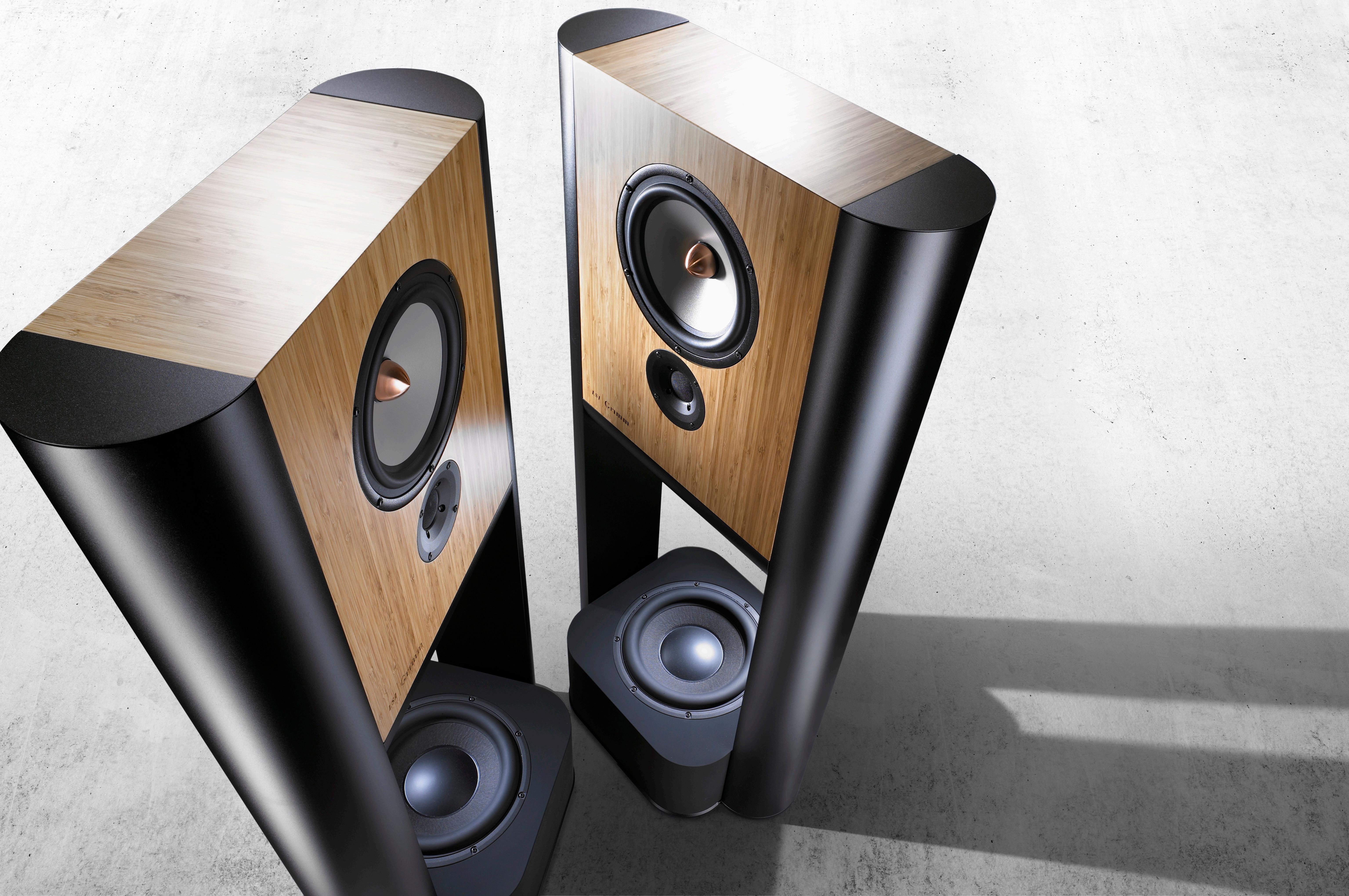


LS1 www.grimmaudio.com
These are the most immersive, dynamic, detail-rich, nuanced, elegant, engaging, emotional, and yes, musical speakers I have ever heard. By far.
Timothy Roth, Positive Feedback

\
James Whistler - Nocturne Blue And Silver Chelsea,1871


mytek.audio



SEISMION REACTIO 541
 By K. E. Heartsong
By K. E. Heartsong

As I have mentioned in several recent reviews, I am at the point where both my reference systems —two-channel stereo and headphone—are pretty much dialled in. This leaves me in a very good place to review all manner of equipment with regard to these reference systems to determine their relative “placement” or award status or their returnto-sender designation. That said, I am now at the stage of fine-tuning said systems toward, if possible, ever greater transparency, resolution, detail resurrection, quiet— vanishing low noise floor—and musicality. And this has led to an ongoing discovery of “tweaks.” Tweaks?
“Tweaks are things that can ostensibly improve the fidelity—the overall sound —of your audio system for relatively little money. Tweaks can be wires or cables or risers that keep cables above the floor.
Tweaks can be isolation platforms or stands or isolation feet or pucks or cones, etc…”

Indeed, I have found buried treasures during this phase of reviews in all manner of tweaks, some of which have been long forgotten, though they remain incredibly relevant; some, born of brand-spanking-new technology, that have been eye-opening; and some that took the proverbial mousetrap and brought things into the 21st century.
The “tweak” that I’m reviewing today is of the latter variety—a mousetrap or, better said, a long existing product whose inventors conducted intensive research and development based on the preservation of, well, life (see below).
The product currently under review is the SEISMION REACTIO 541 “electrified” isolation platform. And if you thought your big buck, non-electrified


audiokeyreviews.com SEISMION REACTIO 541

Wayne Thiebaud - Hill Street Day, City
SEISMION REACTIO 541
isolation platform or amp stand was, well, “all that,” a recalibration is definitely in order.

REFRAIN: Unlike most reviews, this review will be non-sequential, as it will start with how the equipment actually sounds and not the process of physically “undressing” it and/ or laying out its various accoutrements, specifications, etc. Think of this review, then, as a non-linear movie—Memento, Kill Bill, Pulp Fiction, Eternal Sunshine of the Spotless Mind, The Queen’s Gambit, In the Shadow of the Moon, etc.—that likewise starts at the end and winds its way to the beginning.
THE SETUP
The SEISMION REACTIO 541 isolation platform would be placed in the reference two-channel system (see below) and beneath the LYRIC AUDIO Ti 100 MkII SET integrated. As previously mentioned, the reference system is of exceptionally high transparency, resolution, startling dynamics, and with the Audionet combo power (200 Watts) and mesmerizing liquidity with the Lyric Audio Ti 100 SET Integrated (20 Watts). The Vivid Audio Kaya 45 held down speaker honours over the entire course of the review.

I had received the SEISMION REACTIO 541 from Jonathan Badov of Sonic Artistry, whom I’d met in Toronto. We would talk again at the Montreal Audiofest
and then again at AXPONA 2023. Jonathan is that vanishingly rare breed of gentleman who actually does what he says he’s going to do. We got along very well, and I was excited to review the SEISMION isolation platform. Given Jonathan’s explanation of how the SEISMION came about, my excitement grew.
“In touring the laboratories here in Ontario in the mid-1990s, I saw that the laboratory operators and technicians were using some sort of base under the electronics in the fertility clinic. I inquired what they were and the reasons for their use. The technicians told me that they were not able to get consistently meaningful or reliable results from the equipment without isolating them from the building. General vibrations, foot falls, and any other types of movement would upset the machines and results. If someone closed a door abruptly, they could lose a full day’s work. It was further explained at that time that isolating equipment below 3Hz, lower than the natural frequency of the earth, allowed for consistently meaningful results from their atomic force microscopes. Less than this and the images from the microscopes would consistently be unstable and thus unfocused. Another way of saying this is that the preservation of life hung in the balance.”
—Jonathan Badov, Sonic Artistry
audiokeyreviews.com
THE SYSTEM
Two-Channel Reference System
• Grimm Audio MU1 Streamer

• Silent Angel Bonn NX Network Switch
• Silent Angel Genesis GX Clock
• Bricasti Design M1 Special Edition DAC
• Mola Mola Tambaqui DAC
• Audionet PRE G2 Preamplifier
• Audionet AMP Monoblock Amplifiers
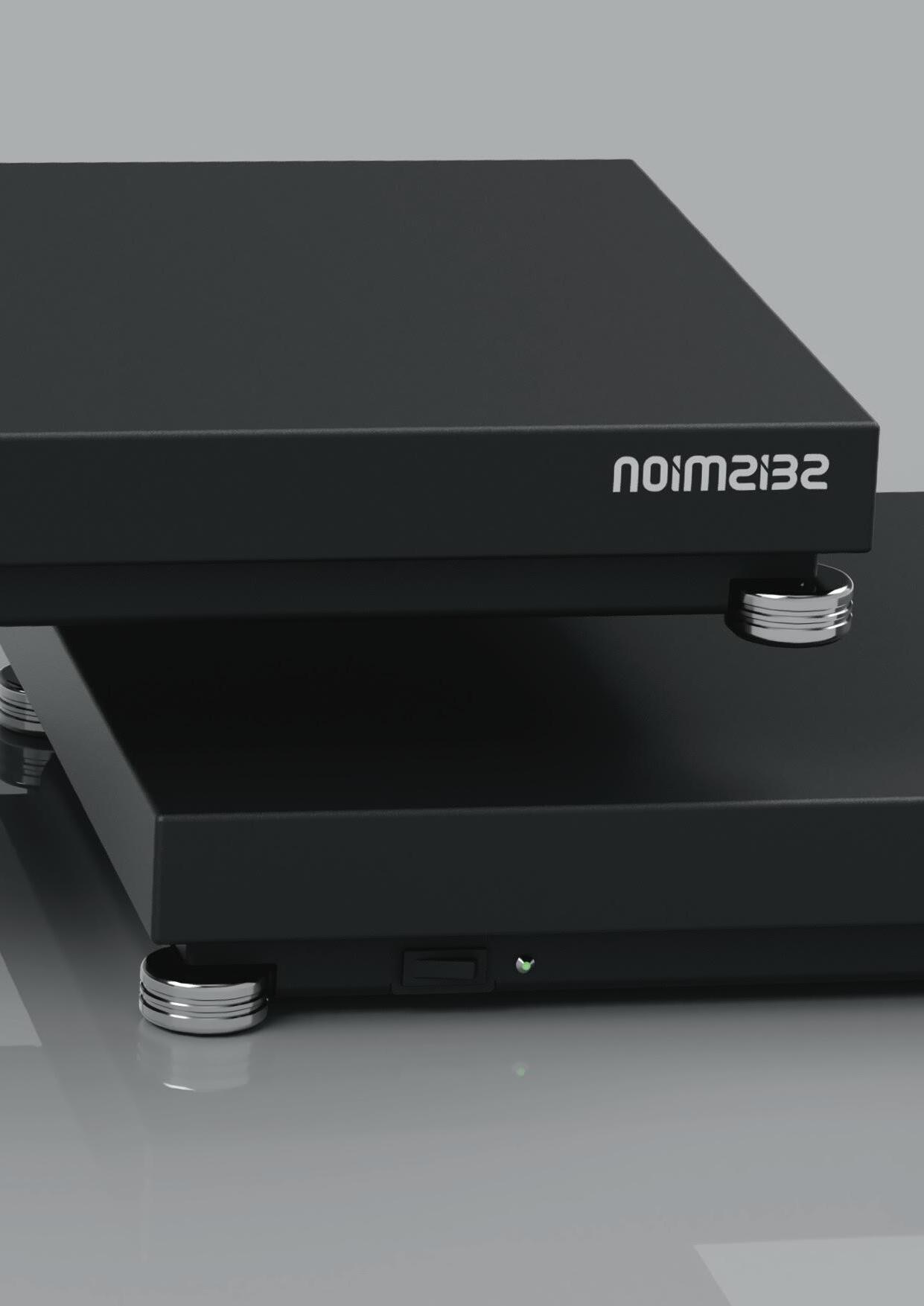
• LYRIC Ti 100 Single-Ended Integrated
• SEISMION REACTIO 51 Isolation
Platform
• Vivid Audio Kaya 45 Speakers
• Kubala Sosna (KS) Elation/Emotion Cable
Loom*
• TORUS AUDIO AVR ELITE power conditioner
THE SOUND
I would again keep things simple in analyzing and reviewing the SEISMION REACTIO 541. This meant very familiar music that was well recorded and represented a mix of genres. I utilized:
• Andy Bey’s American Song (Savoy)
• Dave Brubeck’s Time Out (Columbia)
• Eiji Oue’s Stravinsky (Reference Recordings)
• Elina Duni’s Partir (ECM)
• Joan Shelly’s Joan Shelly (No Quarter)
• MORIMUR album (MORIMUR, ECM)
• Ólafur Arnalds’ Island Songs (ECM)
• Sophie Hunger’s Rules of Fire (Two Gentlemen)
• Vangelis’ Blade Runner Soundtrack (East West UK)
• Voces8’s LUX (Decca Music Group)
Once the music began, the REACTIO 541 ran roughshod over the various vibrations/reverberations, which had moments before run amok across my highly touted two-channel reference system, that I did not imagine were even there. How was this possible, you ask?
The first thing I witnessed across the bass section part of the review was that with the SEISMION REACTIO 541 in place, the bass was now easily the tightest, most effortless, and deepest that I had heard to date from my reference setup. There was greater transparency and resolution, and timbral shadings were much easier to discern. And given the Vivid Audio Kaya 45’s outstanding way with bass reproduction, especially given their size, this was very unexpected.
As I continued listening, it became apparent that the entire bass range was now more explicit and easily able to render every plucked, twanged, slapped bass string, with greater detail, differentiation of tone/timbre, and further, it was more natural, more real, more present. “So,” I thought to myself, “this is how the remaining vibration and resonance
had been hindering my reference system.” I imagine that the replaced amp stand stood by in stark embarrassment at what it had been charged to do but failed to do. Its failure had been corrupting the music.

The pieces, however, quickly came together. The REACTIO 541 did in fact eliminate vibration and resonance to a far better degree than had the previous “unelectrified” isolation platform. And in doing so, the REACTIO 541 had replaced a “quiet” background or low noise floor with an immaculately black-quiet background or a vanishingly low noise floor. This resulted in the freeing of copious detail and insight previously below the noise floor, which allowed my reference system to excel to a level that I had not imagined or thought possible from an isolation stand. Amazing!
With the SEISMION REACTIO 541 in place, timbral shadings, subtle and otherwise, were fully fleshed out, as was bass weight and impact. The low bass rumble apparent on Eiji Oue’s Stravinsky (Reference Recordings), Magdalena Kožená’s French Arias (Deutsche Grammophon), and Eiji Oue’s Rachmaninoff (Reference Recordings) was not only more apparent, its dynamic punch was more immediate and visceral and potent via the Kaya 45’s bass drivers. Also apparent with the various tympani (Stravinsky, Rachmaninoff) was their internal and external reverberations: there
was greater distinction between the tympani, and the contact between mallet and drum was greatly pronounced via all the now relevant information. A wealth of detail that had been previously hidden beneath a reverberant noise floor was free.

When laying out comparative gains, due to the service of the REACTIO 541, the “midrange” section may well have been best served, as there was undeniable magic here. Perhaps the finest micro-details and the fine details responsible for articulative nuance, exacting timbre/tonality necessary to evoke in-room palpability had all been affected by the vibration. The SEISMION REACTIO 541 did away with the various detailsmothering vibrations, micro and otherwise, and the results were astonishing!
If you, like me, are a fan of vocals then, like me, you may well listen to 9, 10, 11 vocal albums in a row and shake your head at the natural, lifelike tone, timbre, and palpable immediacy of the voice. I do not believe there’s been a time when I’ve listened to more vocal recordings than I am now. And I have a witness.
Dick Diamond of GTT Audio was in for a listen, prior to helping a new retailer with a speaker install and a fellow reviewer and friend for an equipment setup. Suffice to say that he sat and listened for quite a while, as I had done, to voice after voice after voice recording. When Dick was ready to leave for
audiokeyreviews.com SEISMION REACTIO 541
said appointments, reluctantly it seemed, he said, “Wow, the vocals are incredible.” And the majority of the equipment he was very familiar with. He was not familiar with the SEISMION REACTIO 541.

In a prior review, I used the analogy of a young man who takes a ride at the carnival on a machine that literally shakes you up and keeps you shaking, though mildly so, after the ride has ended. As the young man leaves the ride, the carny asks him to repeat a phrase that he was asked to say before he boarded the ride. The young man, still shaking imperceptibly from the ride, repeats the phrase. The carny smiles and hands the young man a recording of his voice before and after the ride. What becomes immediately clear to the young man is that his voice is quite different after the ride, as he is still apparently shaking, however minutely (see your current ‘isolation’ platforms).
The “treble” section via the placement of the SEISMION REACTIO 541 witnessed its own rise and benefits, with greatly diminished vibration that was likewise very uncanny. The treble highs were in fact heard to float, now unencumbered by artifice— noise, vibration, unwanted resonance, etc.
There was now a sweetness of high treble notes that carried a heady disdain for stridency, harnesses, breakup, etc. If you can imagine yourself in a relatively small space listening to a very accomplished string
quartet, perhaps one of the violinists has on loan a Stradivarius or a Guarneri, and the space is naturally treated for sound.
Now imagine that recording—Akiko Suwania, J.S. Bach Sonatas and Partitas for Solo Violin (Universal Music) and the tone/ timbre of the “Charles Reade” Guarneri del Gesú violin via Akiko’s exceptional skill. Yes, the detritus that would normally “inhibit” its natural rendering is now not there. Perhaps this provides an idea of what, via a well curated reference system, a SEISMION REACTIO 541 in place, and a superb recording, you are most likely to hear. I have heard that exact recording before and after the SEISMION REACTIO 541 and, again, the sweetness, the profound clarity, the ethereal nature of the notes that rise from that violin and Akiko’s playing is truly sublime.
Perhaps it is the vastly lowered noise floor, the incredible diminishment of vibration to 1.5Hz(!), far below the natural frequency of the earth, that ushers in the intense quiet, the transparency and resolution, the detail, the expanded soundstage, once all buried comfortably beneath the preexisting noise floor.
The SEISMION’s distant cousins— other isolation platforms of any and all makes, not electrified—should be very worried. They should be worried because their like has never, in my experience, having owned some of the most renowned

equipment, ever provided such a substantial lowering of the noise floor.
CONCLUSION
Game changer! If you are wedded or bonded to your “reference level” isolation platforms via long-standing ownership or relationship/ loyalty to a manufacturer, then do not try the SEISMION REACTIO isolation platform. It will, at the very least, hurt your feelings, as you’ve not had what you’d thought you had, but something less.
The SEISMION REACTIO 541 isolation platforms are NOT your unelectrified, passive isolation platforms, not even close. What they represent is the next “quantum shelf,” if you will, that will undeniably give you more of your music, regardless of how “reference” your current system is believed to be. It’s not. There is vibration and resonance even now coursing through and haunting your music to various degrees as I write (that is not coursing through mine).

What the cumulative result of using a SEISMION under several components in a given system is, I do not know. I can only guess at the resulting effects. And that, dare I say, is a daunting realization—If one SEISMION can so free the music from all bounds while virtually eliminating vibration/ resonance, then a series would be mindboggling!
Since when do tweaks receive DIAMOND AWARDS? When they absolutely deserve them, for lifting the aforementioned reference system to an entirely new “reference’’level. We happily award the SEISMION REACTIO 541 component our DIAMOND AWARD for excellence.

Pros: A supposed “tweak” that will lift your reference system, regardless of price, to the next “quantum shelf” or “reference level,” which will free your music no end.
Cons:…

info@seismion.de
SEISMION REACTIO 541 $5,995
DISTRIBUTOR
Jonathan Badov
Sonic Artistry, Toronto/Aurora
By Appointment Only
www.SonicArtistry.ca
sales@sonicartistry.ca (416) 254-3887
COMPANY SEISMION
AKRM SEISMION REACTIO 541 audiokeyreviews.com
 Pierre Auguste Renoir - Roses and Jasmine in-a Delft-Vase—
Pierre Auguste Renoir - Roses and Jasmine in-a Delft-Vase—




SILENT ANGEL RHEIN Z1 PLUS

 By K. E. Heartsong
By K. E. Heartsong

SILENT ANGEL RHEIN Z1 PLUS
Ican remember with great ease the first audio system I had as a young adult. It was composed of a Rotel integrated, a Rotel CD player (I don’t recall the model numbers), and a pair of floor-standing B&W speakers, the 804 perhaps, of a longretired model. Of course, the original B&W 801 was always on my wish list, though I would only get as far as the 802. It was a good system that entertained my friends and me for quite some time.
I remember how quickly the technology of the industry began to change. Where once there was only the CD player, now there were transports and DACs, entry level to top-of-the-line, with various gadgets and abilities, and earned bona fides. And if I remember correctly, the various manufacturers had taken the charge to fully identify and deal with that music-sapping scourge—jitter—that would diminish and continue to diminish music to this very day. I would advance along this path and end with the penultimate Mark Levinson Transport and DAC separates, just below their top-of-the-line combo (No. 30.5 DAC, No. 31.5 transport). Though I would always miss the Mark Levinson No. 39 CD for its state-of-the-art design, its liquid smooth movement, its curved metal front edges, and its substantive weight, which conveyed high quality. It really was high
quality.
And I remember my first experience with a Silent Angel (a name I’ve always admired) streamer—the Rhein Z1—that always played well above its price, challenging players that it had no right to. While I have certainly become acquainted with and own truly exceptional and highly regarded streamers— Grimm Audio MU1, Baetis Revolution X4 (review coming), Mola Mola Tambaqui (as networked streamer)—there is great respect and appreciation for the the various Silent Angel products I have reviewed and their ability to, well, easily transcend their pricing to compete with the top hi-fi priced products time and time again.
This review will be of the latest Silent Angel product, the Rhein Z1 Plus, which represents a further assault on the high-end spectrum of streamers and in the relatively small selfsame though substantive package. You would be much mistaken to judge this “book” by its quite compact aluminumextruded metal cover.
REFRAIN: Unlike most reviews, this review will be non-sequential, as it will start, below, with how the equipment actually sounds and not the process of physically “undressing” it and/or laying out its various parts, specifications, etc. Think of this review, then, as a non-linear movie—Memento, Kill Bill, Arrival, Eternal Sunshine of the Spotless

audiokeyreviews.com

Claude Monet - Irises

SILENT ANGEL RHEIN Z1 PLUS
Mind, The Terminator, In the Shadow of the Moon, The Queen’s Gambit, etc.—that likewise starts at the end and winds its way to the beginning.
THE SOUND
I had become accustomed to the Silent Angel signature, which, simply put, represented an incredibly low noise floor, given its pricing that was always competitive with much more expensive streamers. This was coupled with an analog-like signal, replete with daunting transparency, resolution, and an ability to present fine detail with great ease. It became crystal clear when the Rhein Z1 Plus went up against a well-known streamer nearly six times its price. The more expensive streamer seemed opaque in comparison. And this was something I was not even remotely prepared for.
As I mentioned in my review of the Rhein Z1:
“Your computer doesn’t stand a chance and the ROON Nucleus Plus doesn’t either. That blur that just passed them both by on the high-fidelity road to nirvana, well, it was the Silent Angel Rhein Z1 and Forester F2 combo moving at hypersonic speeds and the combo is miles ahead!”

The Rhein Z1 Plus follows the same script, and its abilities allow it to surpass
streamers at multiples of its price, which was clearly evident time and again. I could give a run-down across discreet frequency segments —bass, midrange, treble—but check the review of the Rhein Z1, with a note that the Plus was quieter still, and you’ll have an idea of its relative abilities. Though in short there was that selfsame transparency, air, nuance, and the musicality was just as immersive and beguiling.
The Rhein Z1 Plus paired exceptionally with every DAC in-house, and never was there a letdown in its high-fidelity prowess or its musicality. And when paired with the Forester F2, those well-known high-end streamers became a wee bit more opaque.
The Rhein Z1’s Plus volumetric cube is such that it too can take on great width when there are no limiting components in the chain of playback. And as our reference systems are vetted for not limiting any aspect of high fidelity reproduction, there were no issues here. However, when coupled to the Forester F2, the overall volume expanded and allowed for the combo to capture details buried at the depths of a soundstage in a lesser system. This was one of the many ways in which the Silent Angel combo continually rose well above its price category, its competitors, and my expectations. The combo’s sound-staging abilities—spacing, layering (front to back positioning)—were
audiokeyreviews.com
SILENT ANGEL RHEIN Z1 PLUS
outstanding. And tone, timbre, refinement, ambiance left me wanting for nothing. Surprise? Yes, and especially at this price point.
The Rhein Z1 Plus and Forester F2 were paired with the Mola Mola Tambaqui, the Bricasti Design M1SE DAC, and the Mojo Audio Mystique X SE DAC. The headphone amps employed were the Aurorasound HEADA, the HeadAmp GSX MkII, and the Blue Hawaii Special Edition Electrostatic. Headphones used were the Abyss AB1266 Phi TC, the ZMF Atrium, the Meze Empyrean, the STAX SR-009S, and the Dan Clark CORINA. Audience Front Row wires and AntiCable and RSX power cables connected the system. The TORUS RM 20 provided service as the power conditioner.
NOTE: You’ll want to pair the combo with very good cabling to get the best out of them, as poor cabling will stifle their abilities and price should not necessarily be a factor. I’m happy to provide recommendations.
DESIGN, LOOK & FEEL
The family resemblance of the external facade, not taking into account its rear panel, is nearly identical. The Rhein Z1 Plus is compact, substantive, clean, and bears a ridged squarish (with round corners) black metal body. Further, it is also CNC’d from
“aerospace industrial-grade aluminum alloy, wherein the entire chassis serves as a fanless CPU heat-sink which reduces thermal noise by 15%.” The Rhein Z1 Plus will fit on any desk and in so doing, will hide its rather impressive abilities as a true high-fidelity streamer.
The Silent Angel Rhein Z1’s Plus back panel features, from left to right: a metal push-button on/off switch positioned above a 25MHz word clock input; two ethernet inputs and below, a toggle switch for selecting internal or external clock; a 12V linear power supply input; and a USB-C port beside the power supply input. Further to the right are two USB 3.1 ports and beside it, an HDMI port. And finally, beneath are two USB 2.0 ports for connection to a DAC and one for additional storage.
The Rhein Z1 Plus, in sum, is minimalist, beautifully executed with a solidity and weight that speak to substance, a wellexecuted design, and decidedly high-fidelity abilities.
FUNCTIONALITY
Silent Angel Rhein Z1 Plus
The Rhein Z1 Plus, like its sibling, is a Roon Core and a Roon Bridge that allows the play of Spotify, AppleAirPlay, Amazon Music, Tidal, and Qobuz. It also plays back internally stored music or music present on memory sticks, etc.

audiokeyreviews.com
The Rhein Z1 Plus can be enabled by its proprietary VitOS operating software, which allows for its quick enablement and recognition by your system and/or Roon. It took mere minutes to plug in the ethernet cable, the USB cable, and then power it via the Silent Angel Forester F2 LPS 12V power supply. Through the VitOS system, I selected the Roon core as a streaming engine, and the Rhein Z1 Plus became immediately available for streaming.
The differences between the Rhein Z1 Plus and the Rhein Z1 are briefly outlined below. The Rhein Z1 Plus:
• Utilizes the newest Intel Quad-core CPU J6413 Processor
• Comes standard with more RAM 16GB/ 32GB relative to 8GB/16GB
• Has a more accurate TCXO word clock
• Comes with external port for a 25MHz state-of-the-art clock
• Offers greater overall noise reduction
• Outputs to 10 audio players versus the standard edition’s 2 audio players

• DSD playback up to DSD512 versus the standard edition’s DSD256
Overall, the Rhein Z1 Plus brings additional noise and jitter reduction (25MHz word clock), increased RAM and memory, the ability to support up to 10 audio players, and it can also handle higher DSD playback formats.
CONCLUSION
The Rhein Z1 Plus ($3,199), like its nonPlus sibling, brings exceptional high-fidelity streaming to your system, whether it be twochannel or a dedicated headphone system. And again, its value-to-cost ratio is outstanding, as exemplified by two quite well-known streamers, four to six times its price, which were in-house during its review. Well, the Rhein Z1 Plus streamer embarrassed them both. The two much more expensive streamers, which shall go unnamed (we don’t throw products under the bus) were returned unceremoniously to their manufacturers. This, of course, speaks to the tremendous value and high-fidelity bona fides inherent in this relatively low-cost streamer.
And in this case, given all the additional goodies—more RAM, more memory, a quieter overall component infrastructure (second-generation USB with audio enhancement), further jitter diminishment via a state-of-the-art 25MHz clock input (we did have the Genesis GX Master Clock on hand for the review!), and you’re no longer in $3k-$4k territory, you’re easily competing in $20k territory, especially when you’re taking down giants left and right.
Given the various improvements, the Silent Angel’s ever-evolving and impressive high-fidelity signature, its extraordinary 2 to
SILENT ANGEL RHEIN Z1 PLUS
0 victory over, well, giants(!), it’s as easy as breathing to award the Rhein Z1 Plus, brimming with consumer-friendly goodies, our DIAMOND AWARD for excellence.
Pros: Exceptional performance and a wealth of audiophile goodies that allow it to compete far, far above its price range, and in every respect.
Cons: None.
SPECIFICATIONS
https://www.silentangel.com/z1-plus/
COMPANY
Thunder Data, Co., Ltd.
Silent Angel Rhein Z1 PLUS, $3,199
Thunder Data Co., Ltd
www.silent-angel-audio.com
AKRM
audiokeyreviews.com


 Henri Matisse - Daisies
Henri Matisse - Daisies
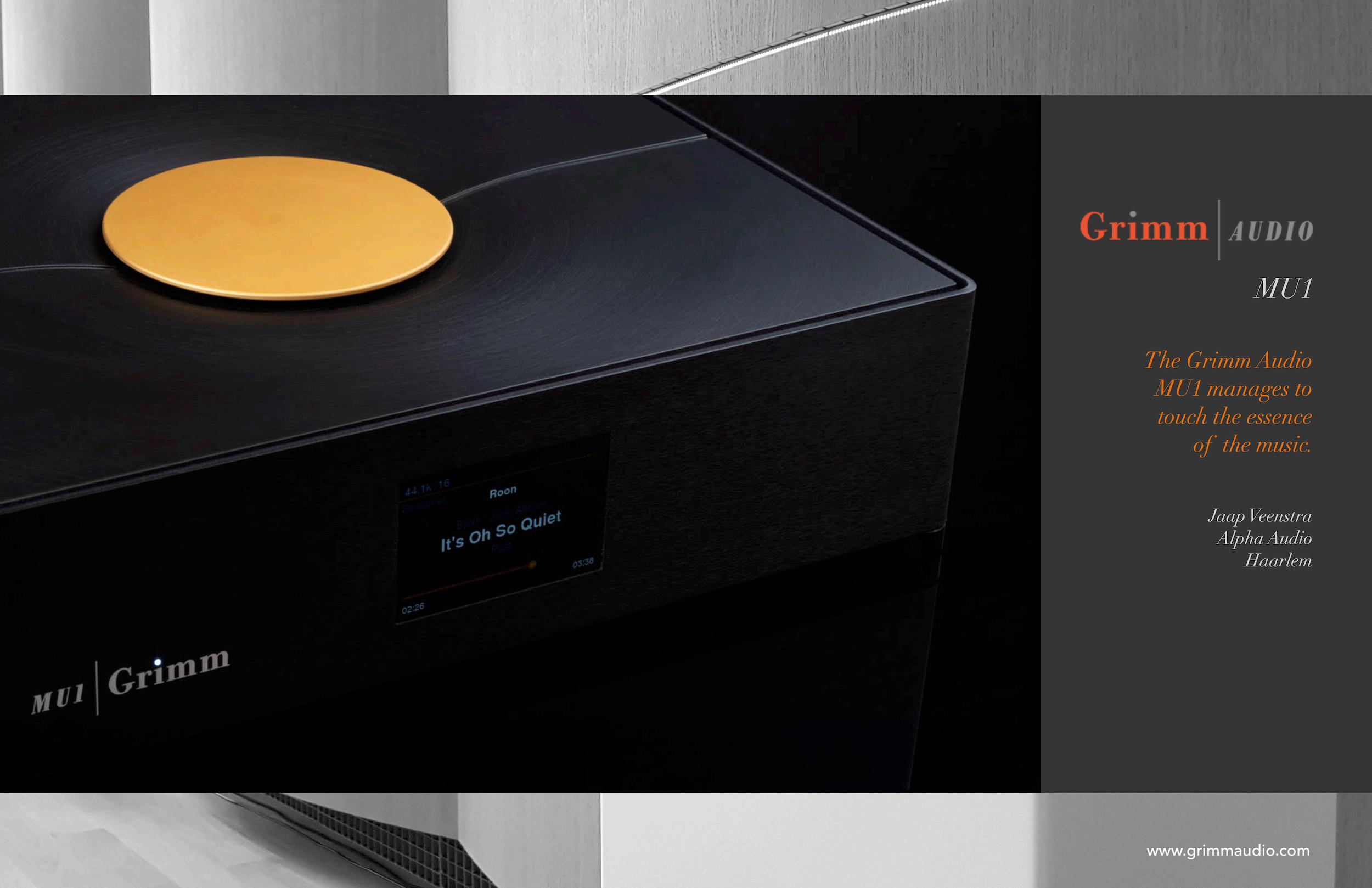

 Paul Gauguin - Nature morte aux pommes
Paul Gauguin - Nature morte aux pommes

 CLARUS AUDIO
CLARUS AUDIO
CRIMSON CABLE LOOM
 By Andre Marc
By Andre Marc
CLARUS AUDIO CRIMSON CABLE LOOM

No area of high-performance audio can be more confusing than choosing cables. There’s a wide variety of competing designs, and many manufacturers claim to provide the best transmission of the pure audio signal. With its established line of cables, Clarus, a firm founded in Orlando, Florida, in 2011, offers its own solution for discriminating audiophiles.
Clarus touts a few things that set it apart from most other cable manufacturers. First, they use oxygen-free pure copper by Ohno Continuous Casting (PCOCC). PCOCC's low electrical resistance and single-crystal impurity-free construction make it ideal for accurate signal rendering.
Chief designer Jay Victor used extensive experimentation and testing to finalize the cable designs to align with the sonic goals Clarus had established. There are a number of videos well worth watching on the Clarus website. The site further reveals that Clarus combined art and science, and listening, to hit the mark. No magic dust or voodoo involved.
Clarus also claims to have a patented cable design that uses three distinctly different conductor types. According to Clarus, “each individually insulated; solid heavy-gauge conductors, flat conductors and spiral-ribbon conductors (with a nonconductive core) dramatically improve clarity,
and the resulting sound is more open and transparent. The key to the outstanding performance of Clarus Cables is the size of each conductor and its physical relationship to the other conductors.” In fact, Clarus holds numerous patents linked to their designs.
We received for review a set of the Clarus Crimson line, their top stuff. Included were balanced XLR cables, single-ended RCA cables, power cords, and their USB cable. The cables are very impressive in their build quality and workmanship, with a fit and finish appropriate for a premium audiophile product. As a plus, they are attractive and seem durable enough to outlast their owners. All the cables are beautifully terminated as well, which inspires confidence in use.
The Clarus Crimson line are luxury audio products, priced accordingly. The singleended Mk II interconnects start at $1,560. The XLR balanced version starts at $2,100, the power cords start at $1,110, and finally, the USB cable starts at $525. Price increases with length, which is standard.
SET-UP AND LISTENING
We installed the interconnects first, then the power cords, then the USB cable. We prefer to stagger the introduction of each set of cables so we can hear what each layer is contributing. Of note, Clarus sent the cables
audiokeyreviews.com
 Pablo Picasso - The Dream
Pablo Picasso - The Dream
CLARUS AUDIO CRIMSON CABLE LOOM

“burned-in,” so we did not spend too much time letting them settle; we got right down to listening. We connected a Rogue RP-7
cues over several other USB cables we own; to be fair, they are also far less expensive. What we noticed immediately was that

We used the single-ended interconnect with a SOTA Comet turntable and Pyxi phono state (review forthcoming). We used the power cords on the DAC, Preamp, and Power amp. The USB cable was inserted between a Sonore Rendu streamer and the Bryston. We auditioned the USB cable last, and to say we were thrilled with its performance would be an understatement. The cable is rugged and the connectors are superb. We immediately heard an improvement in overall clarity and spatial
This was apparent on the new album from one of our favourite bands, The Clientele, I Am Not There Anymore, which is chock full of lush Beatle-esque splendour, prog rock experimentation, and memorable melodies and lyrics, their trademark.
The band’s lead architect, vocalist, and guitarist Alasdair MacLean’s voice is a beautiful instrument, with overtones of John Lennon-era Rubber Soul, and the Clarus cables brought out all the dimensions in his vocals. Having seen the band live, I can tell
audiokeyreviews.com
you that the tonal accuracy was absolutely top-tier. The band creates a very evocative impressionistic landscape throughout their albums, and the new one was no exception. The arrangements had so much nuance and the bass had realistic weight through the Clarus loom.
We then streamed the self-titled debut from Fractus, a Glasgow-based ensemble that plays the most charming blend of styles. It can be best described as chamber folk jazz. The music is all acoustic, with dark, delicate hues. Instrumentation includes violin, cello, saxophone, drums, accordion, and the lovely vocals of Irini Arabatzi. Tracks like Plastic Vortex and Sitting Tides had the most enticing pastoral mood, and the Clarus cables made the music sound as if it was flowing out of the speakers like puffy clouds. There was so much expressiveness and the imaging was precise. The Crimson cables also managed to bring out the intimacy in these songs, giving it the feel of music recorded in a cozy den. Following this lead, we listened to quite a bit of orchestral classical music, all highresolution 96 KHz and above in sample rate. We found soundstaging rather exceptional, and locating parts of the orchestra on the virtual stage was easy. We thoroughly enjoyed everything, from classical guitar pieces to organ symphonies. Timbre and texture was exceptionally rendered, a must for purist
acoustic recordings. Orchestral swells had a gorgeously smooth texture, while percussion hits were dynamically powerful and natural. The album that really showed what the Clarus Crimson cables could do was Folksongs by Duo Apollon. The duo, made up of classical guitarist Aaron Has and soprano Anastasia Malliaras, has produced a modern masterpiece, performing pieces composed by Ravel, Falla, Britten, and Seiber. The music is breathtaking and the recording is superb, with just enough ambience and hall sound. The Clarus Crimson wire came as close as you can get to making these two musicians holographically present in the listening room. A real wow moment.
The Crimson RCA cables were put to the test when we spun original pressings of Bitches Brew and In a Silent Way, two of Miles Davis’s influential and controversial releases. These albums are a challenge for any system and cables. The Clarus Crimson loom made perfect sense of the jagged rhythms, complex interplay, and unusual instrumentation. In a Silent Way is essentially a two-part tone poem, with some stellar guitar playing by John McLaughlin, and the Clarus cables brought out the mysterious and dreamy moods. Bitches Brew was made to sound more coherent, and even the dated production shone through. Davis’s horn fared

CLARUS AUDIO CRIMSON CABLE LOOM
especially well, with full-throated brassy overtones.

CONCLUSION
To summarize, the Clarus Crimson Cables
and -girl cables. They are an investment that should last a lifetime. We would highly recommend an audition if you’re considering a cable upgrade. The Clarus Crimson line simply does nothing wrong. Virtually state-


very good sound system. There was definitely a synergy between the cables and our system, and the power cords, USB cable, and analog interconnects seem to be of a piece. Clarus also makes high-end power conditioning products, and interestingly, a portable donglestyle USB DAC.
The Clarus Crimson line is not entrylevel in price; in essence, these are big-boy
Clarus Cable (888) 554-2514 or (407) 855-0497
Clarus Crimson line
http://www.claruscable.com/crimson.cfm info@claruscable.com
AKRM
audiokeyreviews.com
 Pierre Auguste Renoir - Le Bouquet
Pierre Auguste Renoir - Le Bouquet

Paul-Cézanne - House by the
Path


A PUBLIC SERVICE BY AUDIOKEYREVIEWS legionofhonor.famsf.org
San Francisco
 VIVID
VIVID
AUDIO KAYA 45
 By K.E. Heartsong
By K.E. Heartsong
FOLLOWUP
VIVID AUDIO KAYA 45 - FOLLOWUP


My review of the Vivid Audio
Kaya 45s saw them easily surpass every in-house speaker, every speaker that I have ever owned, and every speaker that I have review was completed.
However, as I have continued to listen to the Kaya 45s and use them in reviews as my new reference speaker, a rather interesting fact has come to light. They were not even
fully broken-in, despite the fact that there had been hours on them when I’d received them and I put additional hours on them to ensure their optimal performance. Amazing!
Well, how do they
while others may be just a little bit more than a room can handle.
One of my favorite genres of music is choral. It has not always been a favorite, but
audiokeyreviews.com
 Henri Matisse - Flowers 1907
Henri Matisse - Flowers 1907
since my systems, in this case an electrostatic headphone system, have allowed me to hear choral performances as they were intended to be heard, things have changed. One of the


many things that electrostatic headphones and, dare I say, electrostatic speakers can do is beautifully remake and meticulously layer a choral soundstage as no other headphone or speaker technology can do. Via these electrostatic transducers, choral performance or live performance or even an orchestral performance is naturally rendered to its depth, width, and height—full volume—and what is ethereal within the recording will be made so. This results in a performance that I have described as “in-room” or as a “thereness” or presence that aids mightily in one’s suspension of disbelief that the choralists or musicians or vocalist have joined you in the room.
Prior to the Kaya 45s, other transducers, be they headphones or speakers, even openbaffle speakers, were at best subpar in regard to choral renderings, and quite disappointing at their worst. This necessitated that I only listen to choral and, in truth, live recordings with my electrostatic headphones—STAX SR-009S, Dan Clark CORINA—and my electrostatic headphone amplifier— HeadAmp Blue Hawaii Special Edition or the ViVa Egoista STX (while it was here). That is, until the Vivid Audio Kaya 45s showed up.
As I wrote in my review of the Kaya 45s, every genre is now available for playback and no genre will be poorly represented; in fact, they will be represented with the utmost high-fidelity, technical acumen, and a beguiling musicality. This will find listeners
audiokeyreviews.com
VIVID AUDIO KAYA 45 - FOLLOWUP
with systems up to the task sitting for long hours as they go through the depths of their media—albums, CDs, streams, tapes, etc. Be warned.
I would encourage readers, at the very least, to listen to the Kaya 45s or one of their siblings, given the volume of the room, as the experience will be revelatory. This is the first time, I believe, that I have ever encouraged readers to wholeheartedly seek out a given product and give it a listen. But life is short, and the incredibly beautiful and technically astute rendering of music, despite the proliferation of technology and components bearing its fruit, is rare indeed. The Kaya 45s are that rare fruit, which has, in fact, also won our most difficult award to receive—the BREAKTHROUGH AWARD.


I have no idea where your local Vivid Audio dealer is, but I do know that in the Minneapolis-St. Paul area Bliss HiFi (what better name?) should definitely be put on your short or bucket list, especially if you’re “revising” your listening system and speakers. And Juan, the proprietor, is very knowledgeable.
And no, I am not associated with nor do I own stock in nor am I in partnership of any kind with GTT Audio and Bill Parish or Dick Diamond or Vivid Audio.

THE COMPANY Vivid Audio vividaudio.com THE DISTRIBUTOR Bill Parish Dick Diamond GTT Audio +1 908 850 3092 av@gttaudio.com www.gttaudio.com AKRM


RECOMMENDED COMPONENTS

Welcome to AudioKeyREVIEWS Magazine’s Recommended Components, which will become part and parcel of each of our various issues. The purpose of this section is to acquaint the reader with products—speakers, DACs, amplifiers, preamplifiers, turntables, headphones, IEMs, streamers, portable audio, etc.—that we feel are quite exceptional and rise above their like brethren. There will be three categories —Budget, Mid-Tier, and Top-Of-The-Line. In our Budget Recommendations there will be products that compete far above their respective price point and are, generally, also built to reflect this.Our Mid-Tier Recommendations will encompass those products within arms reach, in terms of relative affordability, that present value and a challenge to the vanguard of their respective product niches. Finally, our TOTL Recommendations will be composed of those products that are at the cutting edge of technological advancement now happening across the world. The three categories of recommendations will rotate across the various issues of our magazine and there will also be a fluidity to the products within the various lists. Things change and especially now given our current technological epoch. The various lists, however, will be fixed on the AudioKeyReviews.com website.

audiokeyreviews.com
 Joan Miro - Woman, Bird and Star (Homage to Picasso)
Joan Miro - Woman, Bird and Star (Homage to Picasso)
 David Hockney -The-Chair
David Hockney -The-Chair
COMPONENTS RECOMMENDED


AURORASOUND HEADA $2999: If you’re looking for an endgame headphone amplifier and even if your headphone amplifier is more expensive, try this one, you may be quite surprised. That said, the Aurorasound HEADA headphone amplifier is a top echelon component and an easy DIAMOND AWARD winner.
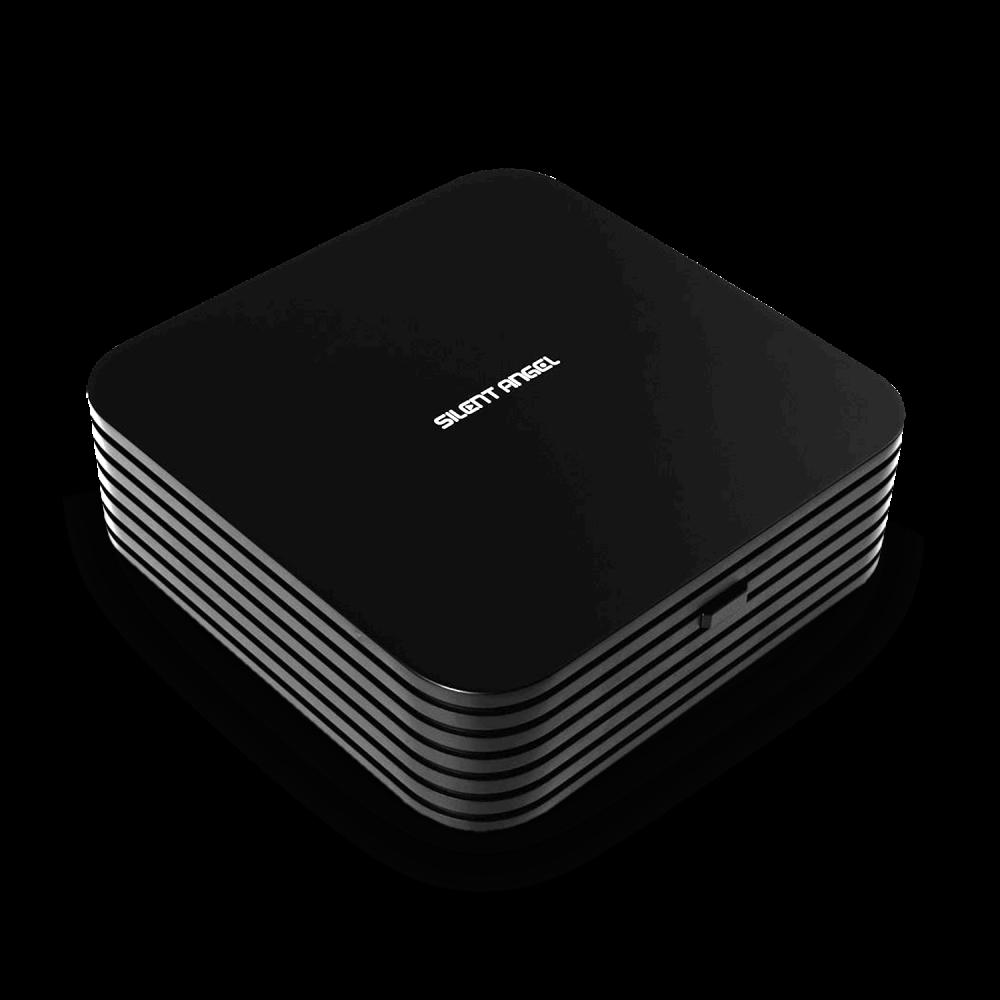


SILENT ANGEL RHEIN Z1 $2299: The Rhein Z1 and Forester F2 combo played far above the league that their combined price would indicate. For many, this $3,900 combo may well represent an endgame streamer/ power supply capable of exceptional fidelity with DACs from entry level to those on the cutting edge.
ABYSS AB1266 PHI TC $5999: I think that I’ve said it all. The Abyss AB1266 Phi TC is a phenomenal headphone. It brings an undying passion for musicality and a ferocity for transparency and clarity and detail retrieval, formerly the domain of the best electrostatic headphones. But this planar headphone speaks that language—electrostatic—fluently and well.

COMPONENTS RECOMMENDED


TORUS RM20 $3999: Can you say pristine, natural, open, and unhindered frequency response? Wide dynamic range? And there were oceans of detail, air, microdynamics, and ambience rendered by the Torus RM 20. It was not subtle. On the contrary, it was stunning.




RSX POWER8 $399: The RSX Power8 clearly holds to the dictum, “Do no Harm,” to the system in which it is being utilized. What it, in fact, offers is pure, clean power, a testament to the meticulous parts selection, research, and conscious minimalism all employed in its design. suffice to say, that it has no competitors at 3 to 4 times is cost.
GESHELLI LABS ERISH2 [E2] $219.99, JNOG2 [J2] $249.99: Disinterested in ostentation, Geshelli Labs believes in real world pricing with high fidelity performance. Their JNOG2 plus ERISH2 are a petite and potent bargain. With just enough character to put flesh on bone, the classy little twosome sets your music free without excessive color or dispensable features.






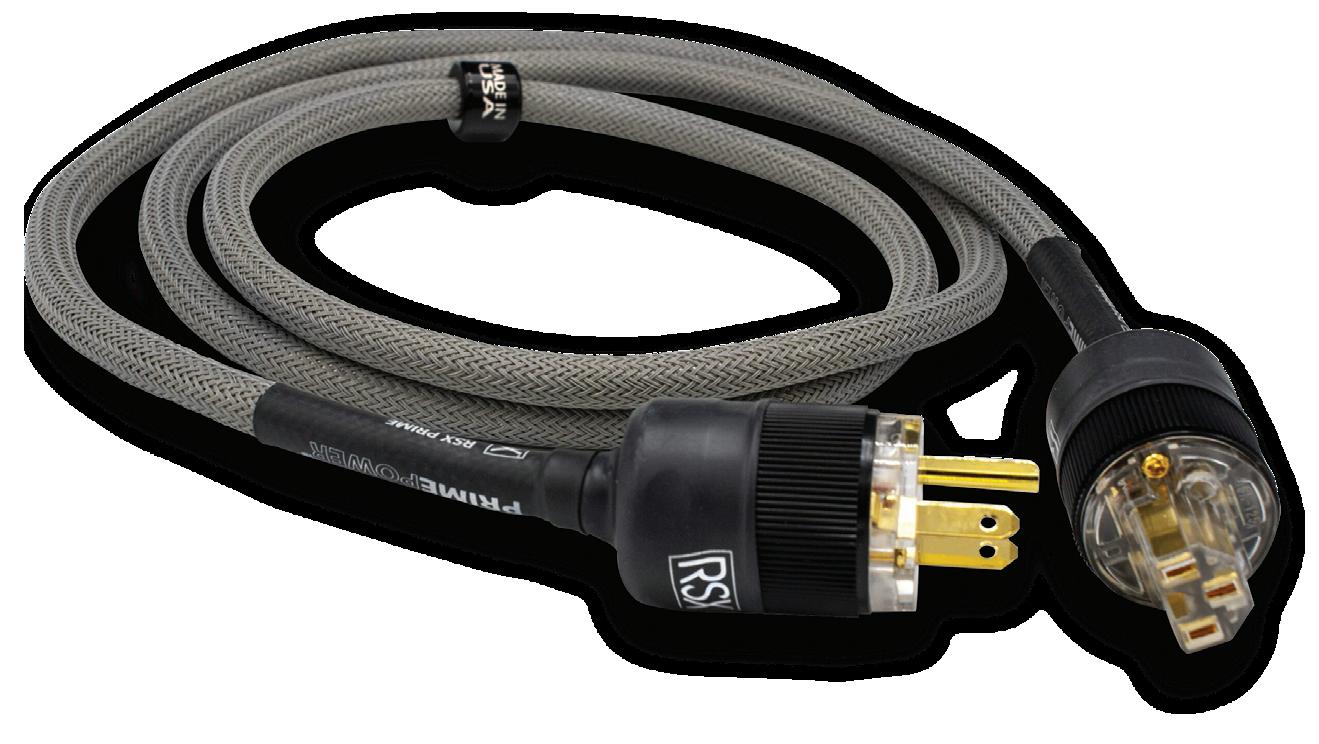

Award-Winning Products Designed by Roger Skoff, founder/designer of XLO Every RSX cable shown has been honored by the audiophile press for performance and value Every RSX cable shown has been honored by the audiophile press for performance and value BEYOND™ AC Power Cord Best at any price MAX™ AC Power Cord Superlative performer PRIME™ AC Power Cord True High End Affordably Priced BENCHMARK™ AC Power Cord “Benchmark is a price-performance killer!” Dr. David W. Robinson, Editor-in-Chief Positive Feedback Online

Edward Hopper - Groundswell

MAGICAL SYNERGIES
MID TO HIGH-END
For us a Magical Synergy represents two components or more, that together make music far above what either make separately. Generally, we’ve discovered Magical Synergies via reviews, where we mix and match a good number of components to determine how one of the components—the component under review— sounds.
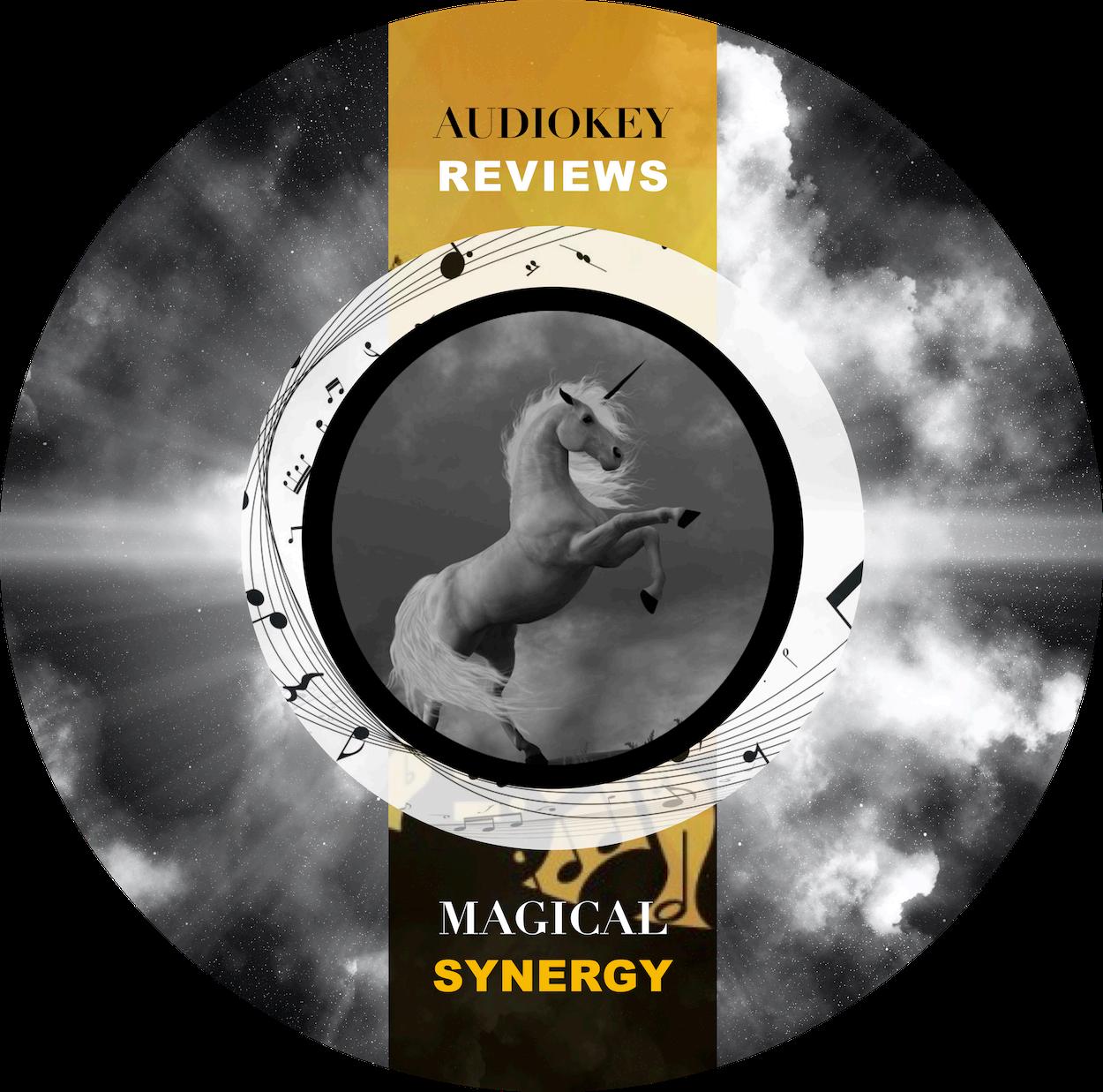

And while there may be strengths and weaknesses between the various combinations, the Magical Synergy represents that combination which has very few if any weaknesses and a wealth of combined strengths.
In this respect, we’ve done the homework for the reader by evaluating numerous combinations to uncover the Magical Synergy, as many of you may not have the time, options, or financial wherewithal to make these determinations. And Magical Synergies are not always uncovered in our reviews and or our research, as they tend to be, well, rare.

A note on the various Magical Synergies that we uncover. We are music lovers first and foremost and not professionals who produce music or movies for a living and require different synergies, nor do measurements come into determination for us of what is a good Magical Synergy and what is not. No,
for this we determine by ear, heart, and soul, that which moves us, provides for that “vibrational” comfort food, and a rich and engaging musical experience. The experience should, of course, come with sufficient detail and resolution and fidelity to recreate venue and/or the experience of listening to live music, when appropriate. After a long and trying day in this topsy-turvy world, wouldn’t it be wonderful if some small measure of nirvana could be achieved through one’s music and the components that play it back?
In other words, our Magical Synergies do not render music that is dry, unengaging, subtractively neutral (see dry, boring, etc.), flat, or lacking in dynamics, when called for.
Please find for your review a number of Magical Synergies below.
Magical măj′ĭ-kəl▶ Of, relating to, or produced by magic.1 Syn•er•gy sĭn′ər-jē▶ The interaction of two or more agents or forces so that their combined effect is greater than the sum of their individual effects.2
1, 2 The American Heritage® Dictionary of the English Language, 5th Edition.
MAGICAL SYNERGIES UNDER $9k

ABYSS AB1266 PHI TC/AURORASOUND HEADA



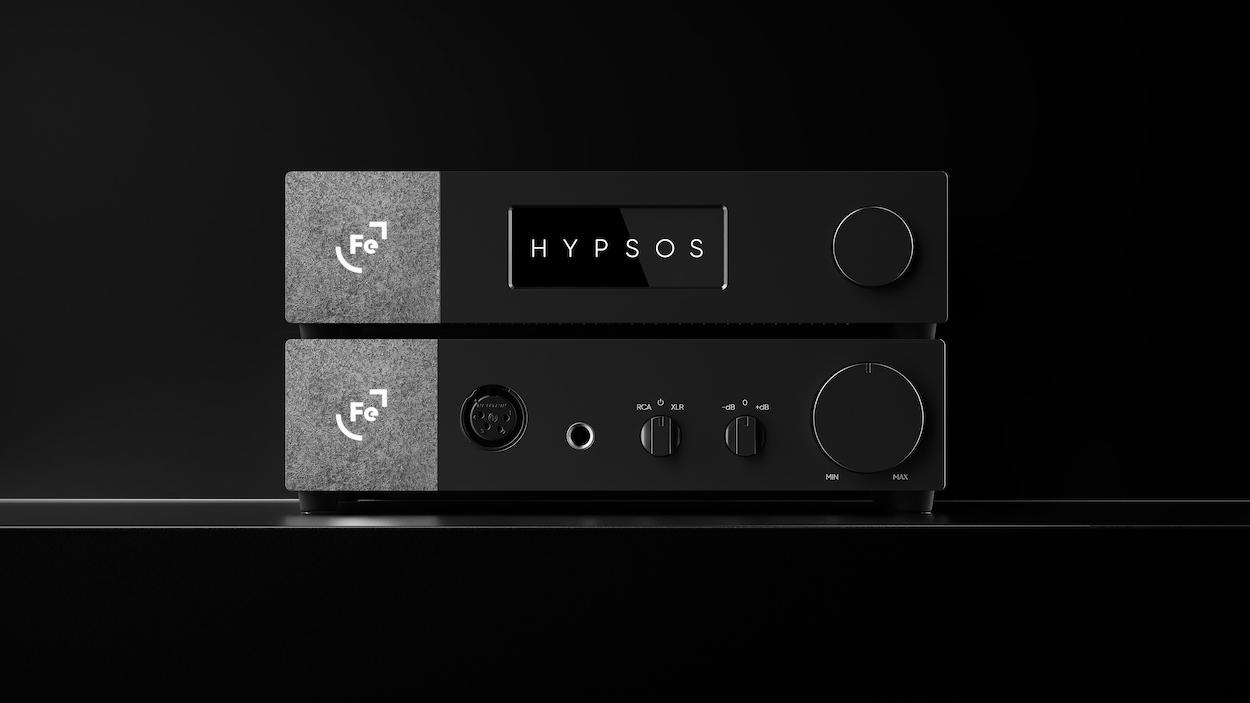
What happens when transparency is, seemingly, exceeded? Realism? Or, perhaps, seeming realism? This is the conundrum raised by the Abyss AB1266 Phi TC and its easy ability to make the best of the best headphones sound dull and uneventful, while it waxes on clear as a wellmade bell … Yikes! The Abyss AB1266 Phi TC is a phenomenal headphone. It brings an undying passion for musicality and a ferocity for transparency and clarity and detail retrieval, formerly the domain of the best electrostatic headphones. The Aurorasound HEADA headphone amplifier is musical from ‘Square One’, ‘Jump Street’, ‘Scratch’, or, practically, as soon as you turn it on, though it gets worlds better thereafter. It is a beautifully, carefully designed endgame component to pass down. If you’re looking for an endgame headphone amplifier and even if your headphone amplifier is more expensive, try this one, you may be quite surprised. That said, the Aurorasound HEADA headphone amplifier is a top echelon component and an easy DIAMOND AWARD winner.
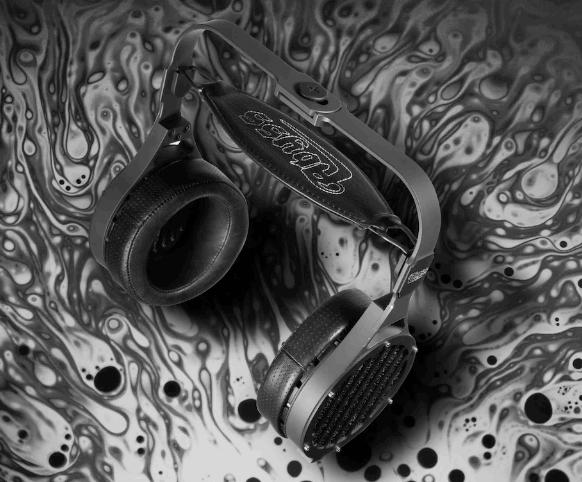
181
MAGICAL SYNERGIES UNDER

$30k


LYRIC AUDIO TI 100 MKII & VIVID AUDIO KAYA 45

There was immediate magic from the Ti 100 MkII, though this was purely from a musical perspective, which was immersive in the extreme. However, after about 100 hours the magic suffused to all aspects of the Lyric Ti 100 MkII’s performance. Tis was easily witnessed, as it followed an exceptional pair of 200 watt/channel, solid state monoblock amplifiers with dedicated preamplifier with relatively minor lessening in overall performance. Remarkable! Te
Lyric Audio Ti 100 MkII is, of course, not one of those products as it has easily met our criteria for the DIAMOND AWARD, our highest award, which reflects on its excellence.

Te Vivid Audio Kaya 45s came in, with little expectation from me.
Tey sat patiently while the other inhouse speakers were put through their paces And when its turn came, well, it astonished and continues to astonish. Additionally, the Kaya raised the bar of performance and award citation for not only speakers but all other equipment aw well. No small task. And this speaks to the profound abilities of the Vivid Audio Kaya 45.
Te Kaya 45s will beautifully play all genres of music and have you neglecting none, as was the case with this reviewer. Te high-fidelity touchstones are always scrupulously met and with a refinement, naturalness, ease, and musicality, most will simply never expect. I certainly did not. Tat said, the Vivid Audio Kaya 45s win our highest award, the DIAMOND AWARD, while making it look easy and yet a good deal more difficult for other speakers and components alike.
MAGICAL SYNERGIES UNDER $8k


DAN CLARK STEALTH & HEADAMP GS-X MK II
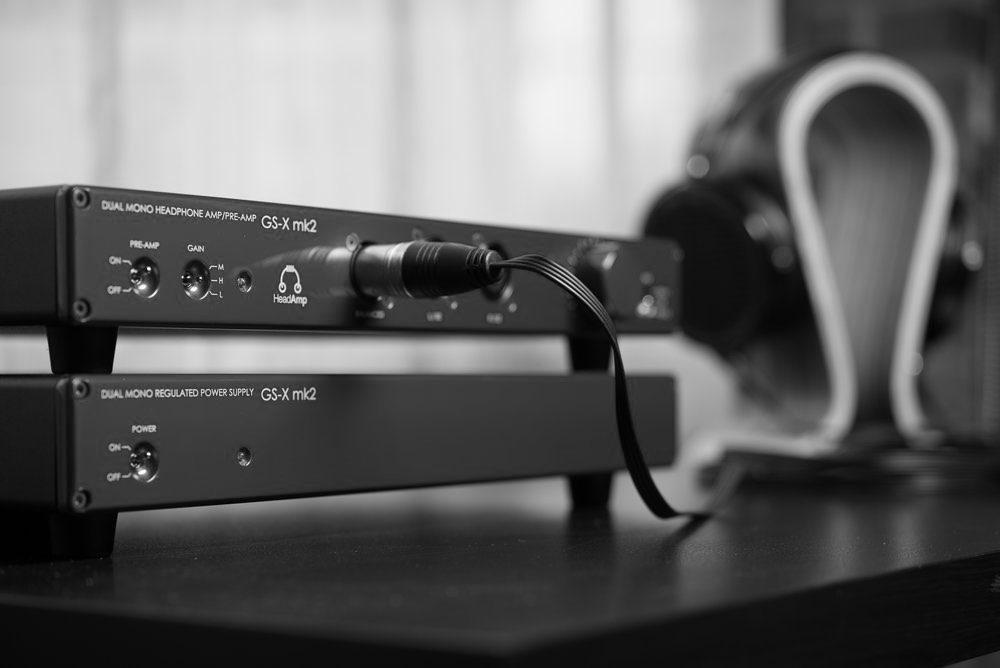


The Dan Clark STEALTH planardynamic headphone is a revelation. It exceeds its prescribed edict—to excel in planar magnetic duties—and goes on to become exceedingly familiar with, if not master of the edicts of the other headphone worlds and technologies. Again, there are very few headphones capable of doing this and fewer still with such compelling musicality. You and your music, regardless of genre, will be well served…Please note that to date, I have listened to a great many headphones, and these days it takes a great deal to move me.

Te HeadAmp GS-X MkII is an exceptional headphone amplifier that not only outperforms its GS-X Mini sibling, but a goodly number of headphone amplifiers that have come my way for review these past years, some being a good deal more expensive. Its attributes are many, starting with its exceptional transparency and resolution, which ferret out both detail and insight in a manner that compels one’s attention. And one mustn’t forget the lickety-split transient responses or the dynamic contrast or the air and ambiance set free. When I wrote of the Mini that, “You can’t possibly be making all of this incredible music”, the same thought, though of a higher order, can now be said of the HeadAmp GS-X


Wayne Thiebaud - Cakes, American Beauty


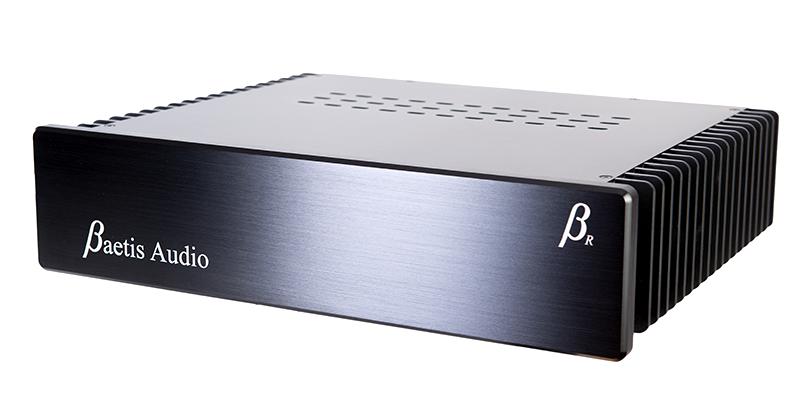

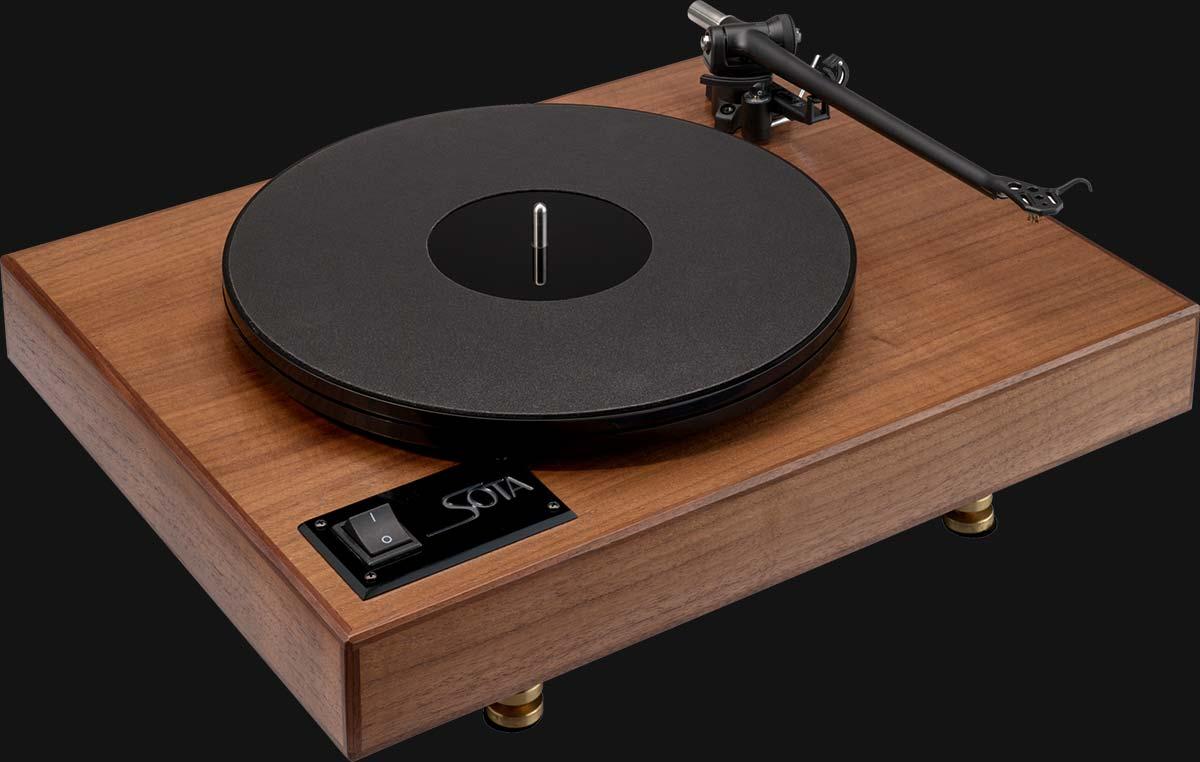
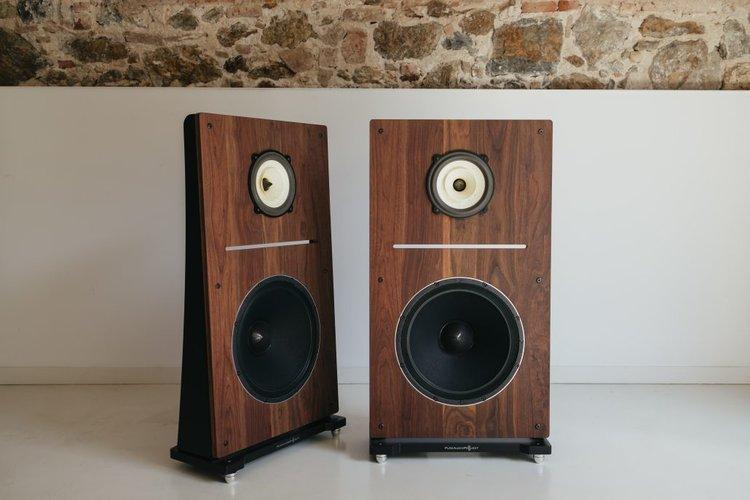

audiokeyreviews.com 1 3 2 5 4
IN THE NEXT ISSUE
NOVEMBER 1, 2023
AUDIO
1. BAETIS AUDIO REFERENCE X4 MINGO DAC
2. OBRAVO CUPID IEM
3. PURE AUDIO PROJECT DUET 15
4. ATMA-SPHERE CLASS D AMPLIFIERS
5. SOTA COMET TURNTABLE
6. ATMA-SPHERE CLASS D AMPLIFIERS (not pictured)
7. AND other reviews, columns, interviews, videos, etc.

MUSIC
VIDEO REVIEWS
INTERVIEWS








REVIEWS ON OUR WEBSITE audiokeyreviews.com MOJO AUDIO MYSTIQUE SHAKTI STONE AIR VIVID AUDIO KAYA 45





 SILENT ANGEL NX & GX
LYRIC AUDIO Ti 100 Mk II
DAN CLARK CORINA
SILENT ANGEL NX & GX
LYRIC AUDIO Ti 100 Mk II
DAN CLARK CORINA
Music is art, art is music.

SPONSORS,WE SALUTE YOU!
ABYSS HEADPHONES
ANTICABLE AUDIO ART CABLE
AUDIENCE AUDIONET
AURENDER
AURORASOUND

BDI USA
BOENICKE SPEAKERS
BRICASTI DESIGN
DAN CLARK
DENAFRIPS AUDIO
GESHELLI AUDIO
GRIMM AUDIO
GTT AUDIO
HEADAMP
HERMAN MILLER
HIGHEND-ELECTRONICS
LYRIC AUDIO
MADLY AUDACIOUS CONCEPTS
MEZE AUDIO
MOJO AUDIO
MOLA MOLA
MYTEK
PARASOUND
PURE AUDIO PROJECT
RSX TECHNOLOGIES
SILENT ANGEL SONIC ARTISTRY
THE VOICE THAT IS
TORUS POWER
TRI-ART AUDIO
VIVA AUDIO
WARWICK ACOUSTIC
ZMF HEADPHONES audiokeyreviews.com

audiokeyreviews.com
Thank You



The Last Platform You’ll Ever Need




E LECTRIFIED S TABILIZATION P LATFORM






























 HermanMiller
HermanMiller






 Wayne Thiebaud - Winding River
Wayne Thiebaud - Winding River




 Courtesy Acoustic Gallery
Courtesy Acoustic Gallery



 Claude Monet - Poplars along the River Epte Autumn, 1891-2
Claude Monet - Poplars along the River Epte Autumn, 1891-2






 The-Old-Mill-1888-by-Vincent-Van-Gogh
Vincent Van Gogh - The Old Mill,1888
The-Old-Mill-1888-by-Vincent-Van-Gogh
Vincent Van Gogh - The Old Mill,1888



 By Irina Kuzminsky
By Irina Kuzminsky




 Paul Gauguin
Paul Gauguin


 Wassily-Kandinsky - Ruggism
Wassily-Kandinsky - Ruggism


 By Rain Jordan
By Rain Jordan
 Henri Matisse - Blue Nude
Henri Matisse - Blue Nude












 Pierre Auguste Renoir - On the Terrace, 1881
Pierre Auguste Renoir - On the Terrace, 1881






 Wayne Thiebaud - Ripley Ridge
Wayne Thiebaud - Ripley Ridge




 outriggers and dimpled
Wearing his soundtrack
outriggers and dimpled
Wearing his soundtrack


 Emile Bernard - View of Pont Aven
Emile Bernard - View of Pont Aven

 By K.E. Heartsong
By K.E. Heartsong


 Paul Gauguin - Still Life
Paul Gauguin - Still Life

















 Pierre Auguste Renoir - Roses and Jasmine in-a Delft-Vase—
Pierre Auguste Renoir - Roses and Jasmine in-a Delft-Vase—





 Henri Matisse - Daisies
Henri Matisse - Daisies

 Paul Gauguin - Nature morte aux pommes
Paul Gauguin - Nature morte aux pommes
 CLARUS AUDIO
CLARUS AUDIO
 Pablo Picasso - The Dream
Pablo Picasso - The Dream


 Pierre Auguste Renoir - Le Bouquet
Pierre Auguste Renoir - Le Bouquet



 VIVID
VIVID

 Henri Matisse - Flowers 1907
Henri Matisse - Flowers 1907




 Joan Miro - Woman, Bird and Star (Homage to Picasso)
Joan Miro - Woman, Bird and Star (Homage to Picasso)
 David Hockney -The-Chair
David Hockney -The-Chair












































